Find what you need to study

APUSH Period 7 Review (1898-1945)
6 min read • december 21, 2021
In AP® US History, period 7 spans from 1898 to 1945 CE. The following guide will be updated periodically with hyperlinks to excellent resources. As you are reviewing for this era, focus on the key concepts and use the essential questions to guide you.
👉 Check the Fiveable calendar for this week's APUSH live stream!
PERIOD 7 DATES TO KNOW
🎥 Live Stream Replay - Period 7 Review
STUDY TIP: You will never be asked specifically to identify a date. However, knowing the order of events will help immensely with cause and effect. For this reason, we have identified the most important dates to know.
1898 - Annexation of Hawaii
1898 - Spanish American War
1903 - Wright Brothers
1917 - US enters WWI
1920 - Women’s Suffrage
1920s - Red Scare
1920s - Prohibition
1929 - Stock Market Crash
1932 - Bonus Army
1935 - Social Security Act
1939 - WWII starts in Europe
1941 - Attack on Pearl Harbor
1944 - D-Day
1945 - Atomic Bomb dropped on Hiroshima
PERIOD 7 ESSENTIAL QUESTIONS
STUDY TIP: Use the following essential questions to guide your review of this entire unit. Keep in mind, these are not meant to be practice essay questions. Each question was written to help you summarize the key concept.
What were the goals and achievements of the Progressive Era?
How did the growth of mass culture affect US society?
In what ways did the global conflicts of the early 20th century affect the United States?
🧭 Study Guide: Contextualization to Period Seven
Past Essay Questions from Period 7
STUDY TIP: Content from the this era has appeared on the essays twenty times since 2000. Take a look at these questions before you review the key concepts & vocabulary below to get a sense of how you will be assessed. Then, come back to these later and practice writing as many as you can!
*The APUSH exam was significantly revised in 2015, so any questions from before then are not representative of the current exam format. You can still use prior questions to practice, however DBQs will have more than 7 documents, the LEQ prompts are worded differently, and the rubrics are completely different. Use questions from 2002-2014 with caution. Essays from 1973-1999 available here .
2018 - SAQ 2: Progressive Era
2017 - SAQ 2: Effect of WWII on society
2017 - LEQ 3: 19th amendment
2016 - LEQ 3: WWI and US foreign policy
2015 - SAQ 2: Environmental policies
2014 - DBQ: US Foreign policy 1918-1953
2012 - LEQ 3: Cultural conflicts of the 1920s
2011 - LEQ 4: Opposition to Immigration
2011 - LEQ 5: African American leadership
2010 - LEQ 4: Progressive women
2009 - LEQ 5: WWII at home
2008 - LEQ 5: Shift of political parties
2007 - LEQ 4: Teddy Roosevelt
2006 - LEQ 4: Progressive reforms
2004 - LEQ 4: Progressive reforms vs. New Deal
2003 - DBQ: New Deal effectiveness
2003 - LEQ 5: United States society
2002 - LEQ 4: Foreign policy after WWI & WWII
2001 - LEQ 5: Rise of Nativism
2000 - LEQ 4: Objectives of WWI
PERIOD 7 KEY CONCEPTS - COURSE OUTLINE
*The following outline was adapted from the AP® United States History Course Description as published by College Board in 2019 found here . This outline reflects the most recent revisions to the course.
7.1. Reforms in US Society
🎥 Live Stream Replay - Progressive Amendments
🎥 Live Stream Replay - The Great Depression & the New Deal
The US continued to transition from rural to urban economies led by large corporations.
- New technology increased production of consumer goods.
- Most Americans lived in cities by 1920, which had more opportunities.
- The Great Depression forced calls for more financial regulation.
Progressive activists called for reforms to combat political corruption and instability.
- ☮️ Study Guide: Progressivism
- Journalists investigated inequality and injustice (muckrakers).
- Activists fought for federal legislation to expand rights (prohibition, suffrage).
- Environmentalists sought to protect natural resources.
- Progressive activists disagreed on racial justice and immigration restrictions.
Legislation was enacted in the 1930s to recover and reform the economy while providing relief for mass unemployment and financial crises.
- Roosevelt enacted New Deal policies in an attempt to end the Great Depression.
- Progressive activists pushed FDR to do more while conservatives pushed for less.
- The New Deal did not end the Great Depression, but it left a legacy of reforms and align many groups with the Democratic Party.
7.2. Growth of Mass Culture
🎥 Live Stream Replay - Black Leaders Under Jim Crow
🎥 Live Stream Replay - The Roaring 20s
⚡️ Study Guide - Innovations of the 1920s
Popular culture influenced and connected more people.
- New mass media (radio, cinema) spread national culture and connected regions.
- Migrations sparked new forms of art and literature
- Fear of communism during World War I led to restrictions on speech.
- 🔴 Study Guide: Cultural and Political Controversy
- Controversies over gender, science, religion, race, and immigration.
Migration patterns were influenced by global conflict.
- After WWI, immigration quotas were passed that favored white migrants.
- Americans migrated to cities for economic opportunities during war.
- Black men and women migrated north and west to escape violence in the south.
- Migration to the US from Mexico increased.
7.3. Global Conflicts
🎥 Live Stream Replay - World War I
🎥 Live Stream Replay - World War II
The US participated in imperialism ventures around the world, which sparked debates.
- The argument for imperialism cited opportunities, racist ideologies, and competition.
- The argument against imperialism cited self-determination and isolationism.
- Study Guide: Imperilaism Debates
- Victory in the Spanish-American war gave the US lands in the Caribbean and Pacific.
- 🔥 Study Guide: The Spanish American War
World War I intensified debates about the role of the US in the world.
- The US eventually joined WWI, reversing neutrality policy.
- 💣Study Guide: Buildup to War and the AEF
- 🏭Study Guide: War on the Home Front
- US forces in WWI tipped the balance in the favor of the Allies.
- Neither the Treaty of Versailles or the League of Nations were ratified by the senate.
- After WWI, the US pursued foreign policy using investment, treaties, and intervention.
- During the 1930s, most Americans opposed actions against Nazi Germany or Imperial Japan, until after the attack on Pearl Harbor pulled the US into WWII.
- 🙅 Study Guide: Interwar Foreign Policy
WWII transformed American society and resulted in the US as a global superpower.
- Americans saw the war as defending freedom.
- Wartime mobilization helped end the Great Depression.
- 🎖️ Study Guide: Mobilization
- Women and minorities had more opportunities for mobility and work during the war.
- The Allies won WWII because of technology, cooperation, and military strategy.
- 🔫 Study Guide: Military Action in WWII
- With Asia and Europe ravaged from the war, the US emerged as the most powerful.
LIST OF CONCEPTS & VOCABULARY FROM PERIOD 7
STUDY TIP: These are the concepts and vocabulary from period 7 that most commonly appear on the exam. Create a quizlet deck to make sure you are familiar with these terms!
Deep breath. This one of the most vocab heavy units.
16th Amendment
17th Amendment
18th Amendment
19th Amendment
20th Amendment
21st Amendment
Albert Einstein
American plan
Anti-imperialist League
Appeasement
assembly line
Atlantic Charter
Australian ballot
Big-Stick Policy
Birth of a Nation
Black Tuesday
Bolshevik Revolution
Central Powers
Charles Lindbergh
Civilian Conservation Corps
Clayton Antitrust Act
code talkers
Committee on Public Information
consumer culture
Court-packing plan
direct primary
dollar diplomacy
Eleanor Roosevelt
Espionage Act
Executive Order 9066
Father Charles Coughlin
Florence Kelley
Franklin D. Roosevelt
Gentlemen's Agreement
Good Neighbor Policy
Great Migration
Harlem Renaissance
Harry Truman
Hawley-Smoot Tariff
Henry Cabot Lodge
Hoovervilles
Huey P. Long
Hundred Days
Immigration Quotas 1921 & 1924
imperialism
isolationism
Kellogg-Briand Pact
Keynesian economics
Korematsu v. US
Langston Hughes
League of Nations
Lend-Lease Act
Lost Generation
Manhattan Project
Marcus Garvey
Meat Inspection Act
Muller v. Oregon
Neutrality Act
Open Door Policy
overproduction
pan-Africanism
Panama Canal
Pearl Harbor
progressivism
Pure Food & Drug Act
Quarantine speech
reparations
Roosevelt Corollary
Rosie the Riveter
rough riders
Sacco & Vanzetti
Schenck v. United States
scientific management
Scopes Trial
self-determination
Sigmund Freud
social gospel
Social Security Act
Spanish-American War
Square Deal
Teapot Dome Scandal
Tennessee Valley Authority
Treaty of Versailles
Upton Sinclair
Volstead Act
War Production Board
War Refugee Board
Wilson's 14 Points
Women's Christian Temperance Union
yellow journalism
Zimmerman note

Stay Connected
© 2024 Fiveable Inc. All rights reserved.
AP® and SAT® are trademarks registered by the College Board, which is not affiliated with, and does not endorse this website.

AP US History Practice Test: Period 7 (1890–1945)
Our free APUSH unit 7 practice test covers the years 1890–1945. This period spans several transformative decades, from the Progressive Era’s reforms to the global upheavals of two world wars. The U.S.’s evolving role in global affairs, especially its involvement in World War I and II and the subsequent geopolitical shifts, is a central theme.
Congratulations - you have completed .
You scored %%SCORE%% out of %%TOTAL%%.
Your performance has been rated as %%RATING%%
Questions 1–2 refer to the following excerpt:
What impact did the automobile have on american society in the early 20th century, what impact did automobiles have on jim crow laws in the early 20th century, questions 3–4 refer to the following excerpt:, what attitude did the progressives take towards the conditions described by sinclair, how did the progressives feel about women’s suffrage and prohibition, questions 5–7 refer to the following excerpt:, what consequences, if any, did world war i have for african-americans, what impact did world war i have on free speech in america, which of the following statements best describes american participation in world war i, questions 8–10 refer to the following excerpt:, what was the main strategy president roosevelt used in the new deal to try and end the great depression, what impact did president roosevelt’s new deal have on the us economy, what impact, if any, did the new deal have on us politics, questions 11–13 refer to the following excerpt:, what long-term factors led to world war ii, which of the following advantages helped the united states achieve victory in world war ii, what consequences did world war ii have on status of the united states, question 14 refers to the following excerpt:, which of the following sentences best describes the significance of the scopes trial, questions 15–18 refer to the following excerpt:, the zimmermann telegram was significant because it:, germany's intention to resume "unrestricted submarine warfare" was a direct threat to:, the territories mentioned in the telegram (texas, new mexico, and arizona) were previously:, the interception and publication of the zimmermann telegram by british intelligence:, questions 19–22 refer to the following excerpt:, the primary motivation for the great migration of african americans from the south was to:, the great migration had a significant impact on:, according to the excerpt, the great migration played a role in:, the "unmet promises made after the civil war" mentioned in the excerpt refer to:, questions 23–24 refer to the following excerpt:, how, if at all, did the status of women change in the early 20th century, based on the provided passage, which of the following best describes the societal attitudes towards women's roles during the early 20th century, questions 25–26 refer to the following excerpt:, what position did john muir take on the exploitation of natural resources within the national park system, considering the context of american history and the westward expansion era, which of the following best describes the underlying sentiment expressed in the provided passage, questions 27–28 refer to the following excerpt:, what impact did the spanish-american war have on the military and political status of the united states, the public reaction to the sinking of the uss maine was greatly impacted by which of the following.
Next Practice Test: Period 8 (1945–1980) >> AP US History Main Menu >>
MA in American History : Apply now and enroll in graduate courses with top historians this summer!
- AP US History Study Guide
- History U: Courses for High School Students
- History School: Summer Enrichment
- Lesson Plans
- Classroom Resources
- Spotlights on Primary Sources
- Professional Development (Academic Year)
- Professional Development (Summer)
- Book Breaks
- Inside the Vault
- Self-Paced Courses
- Browse All Resources
- Search by Issue
- Search by Essay
- Become a Member (Free)
- Monthly Offer (Free for Members)
- Program Information
- Scholarships and Financial Aid
- Applying and Enrolling
- Eligibility (In-Person)
- EduHam Online
- Hamilton Cast Read Alongs
- Official Website
- Press Coverage
- Veterans Legacy Program
- The Declaration at 250
- Black Lives in the Founding Era
- Celebrating American Historical Holidays
- Browse All Programs
- Donate Items to the Collection
- Search Our Catalog
- Research Guides
- Rights and Reproductions
- See Our Documents on Display
- Bring an Exhibition to Your Organization
- Interactive Exhibitions Online
- About the Transcription Program
- Civil War Letters
- Founding Era Newspapers
- College Fellowships in American History
- Scholarly Fellowship Program
- Richard Gilder History Prize
- David McCullough Essay Prize
- Affiliate School Scholarships
- Nominate a Teacher
- Eligibility
- State Winners
- National Winners
- Gilder Lehrman Lincoln Prize
- Gilder Lehrman Military History Prize
- George Washington Prize
- Frederick Douglass Book Prize
- Our Mission and History
- Annual Report
- Contact Information
- Student Advisory Council
- Teacher Advisory Council
- Board of Trustees
- Remembering Richard Gilder
- President's Council
- Scholarly Advisory Board
- Internships
- Our Partners
- Press Releases
Period 7: 1890-1945 (AP US History)
Period 7: 1890-1945.
An increasingly pluralistic United States faced profound domestic and global challenges, debated the proper degree of government activism, and sought to define its international role. Topics may include
Debates over Imperialism
The progressive movement, world war i, innovations in communications and technology in the 1920s, the great depression and the new deal, world war ii, postwar diplomacy.
Image Source : Destitute pea pickers in California. Mother of seven children. Age thirty-two. Nipomo, California , a photograph by Dorothea Lange taken in 1936 when she was working for the Resettlement Administration. (Library of Congress)

10-17% Exam Weighting
Resources by Period:
- Period 1: 1491–1607
- Period 2: 1607–1754
- Period 3: 1754–1800
- Period 4: 1800–1848
- Period 5: 1844–1877
- Period 6: 1865–1898
- Period 7: 1890–1945
- Period 8: 1945–1980
- Period 9: 1980–Present
Key Concepts
7.1 : Growth expanded opportunity, while economic instability led to new efforts to reform U.S. society and its economic system.
7.2 : Innovations in communications and technology contributed to the growth of mass culture, while significant changes occurred in internal and international migration patterns.
7.3 : Participation in a series of global conflicts propelled the United States into a position of international power while renewing domestic debates over the nation’s proper role in the world.
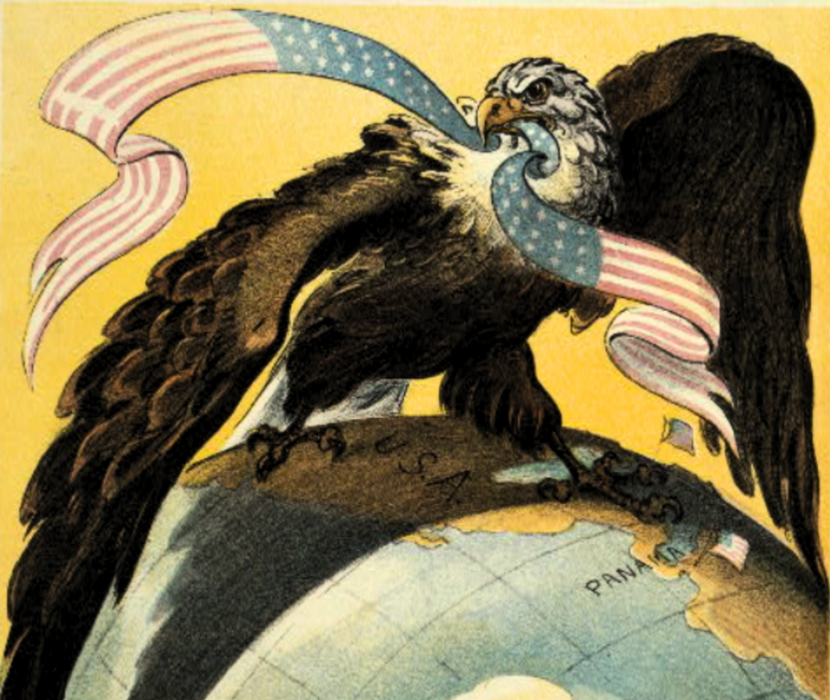
Empire Builders
By robert w. cherny.
Learn about the reactions to the growth of an American overseas empire.
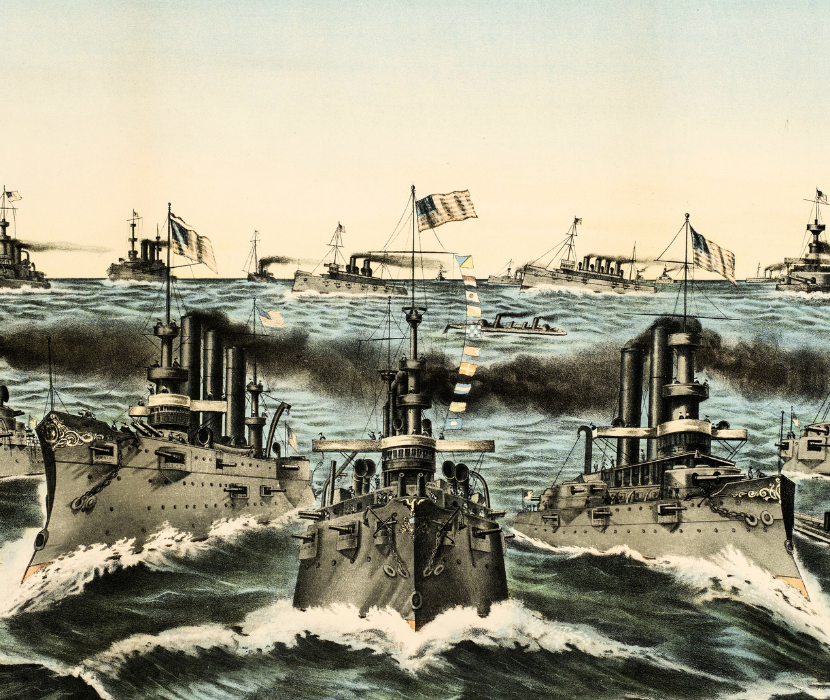
Our Victorious Fleet in Cuban Waters
Print depicting American naval forces off Cuba during the Spanish-American War
- Primary Source
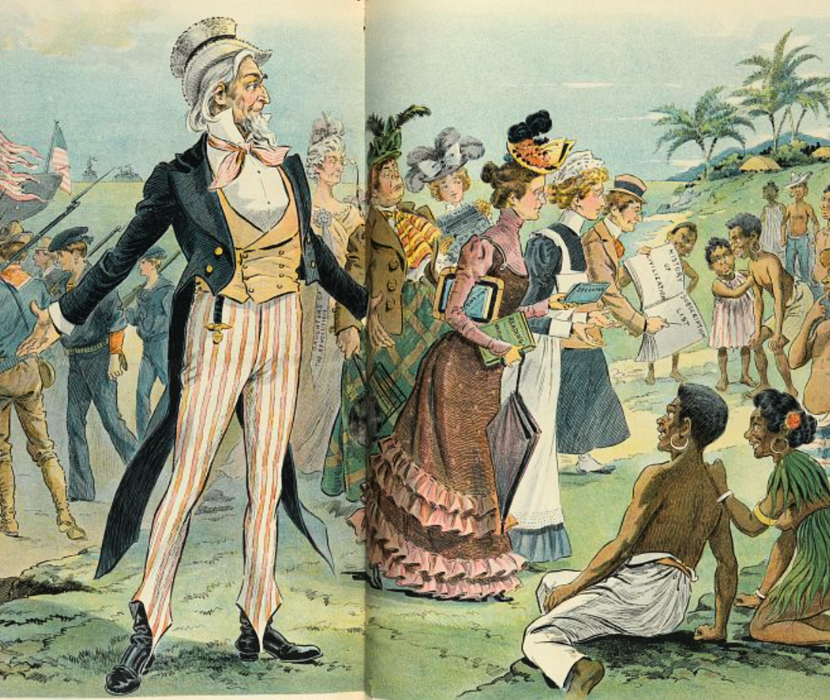
The War against Spain in the Philippines in 1898
By richard meixel.
Learn about US naval actions in Southeast Asia during the Spanish-American War.
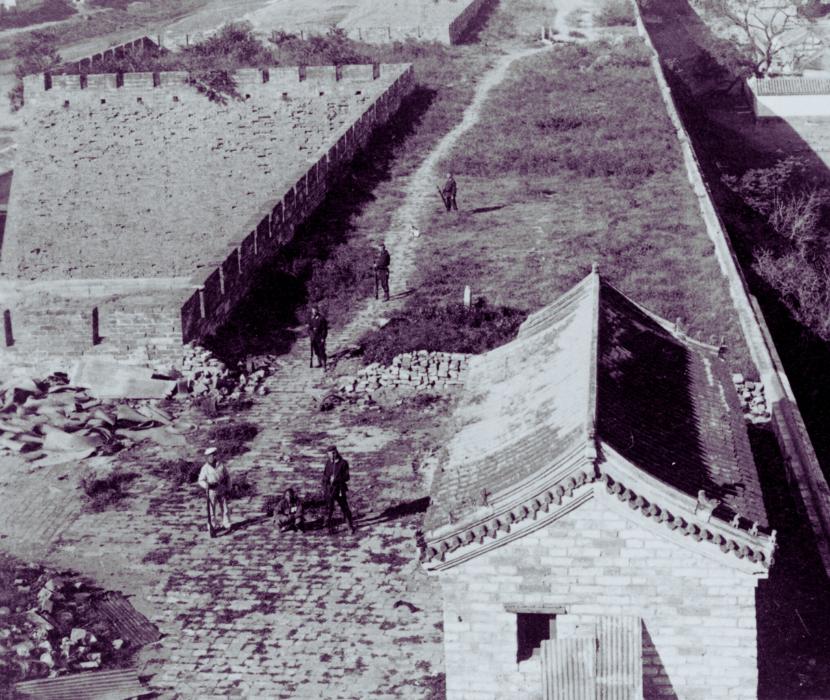
The US in China
By warren cohen.
Learn about the US support of the Open Door Policy and reaction to the Boxer Rebellion.
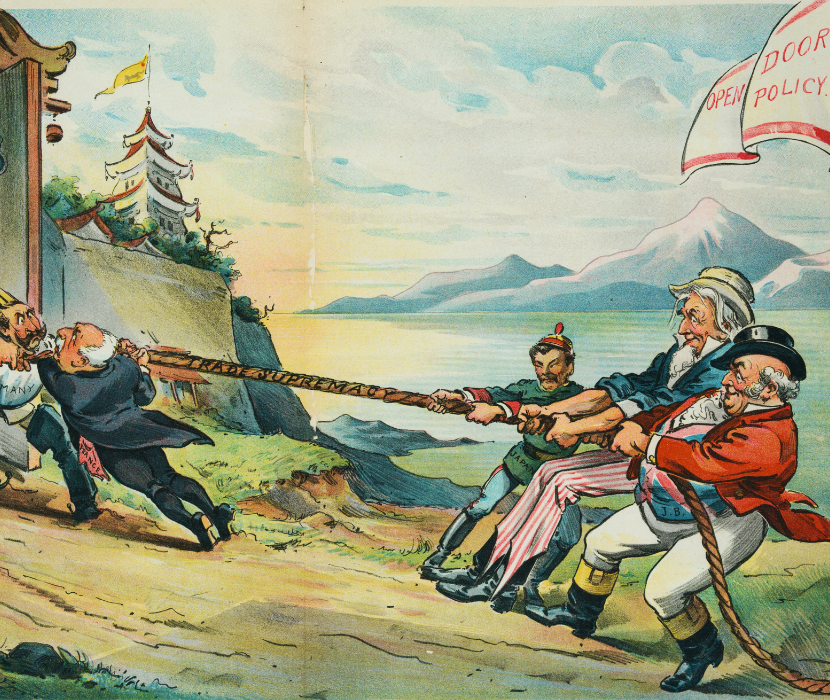
The Open Door Policy and the Boxer War
Learn about how the Open Door Policy served US economic, cultural, and strategic interests in China.
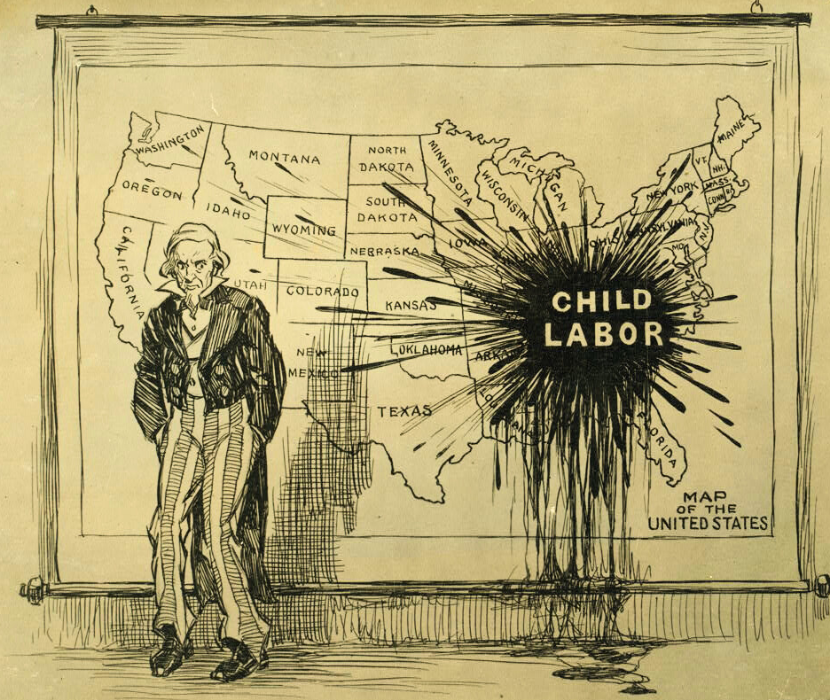
The Politics of Reform
By julie des jardins.
Learn about the politics of reform during the Progressive era.
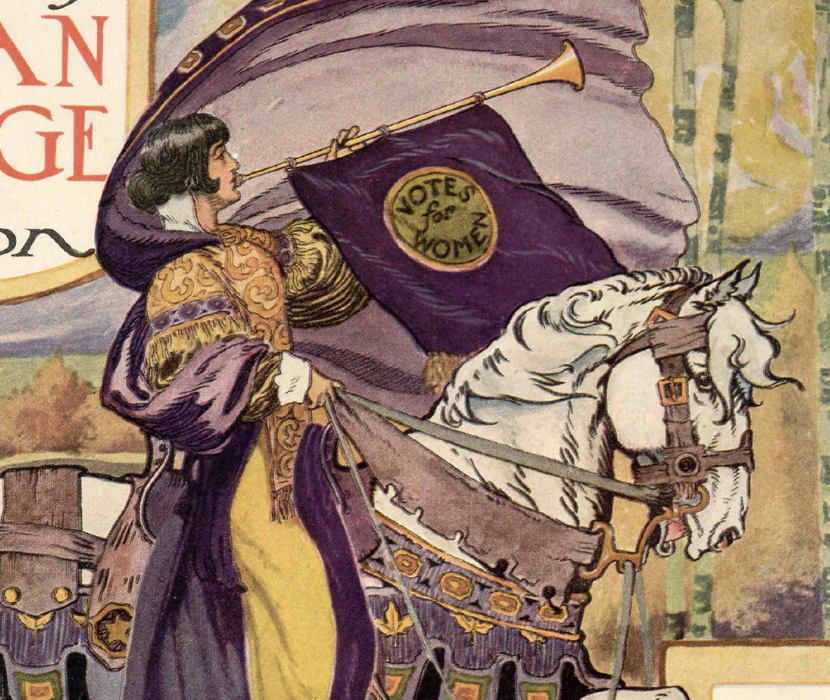
Women in American Politics in the Twentieth Century
By sara evans.
Learn about women who advocated full participation in American public and political life during the suffrage movement.
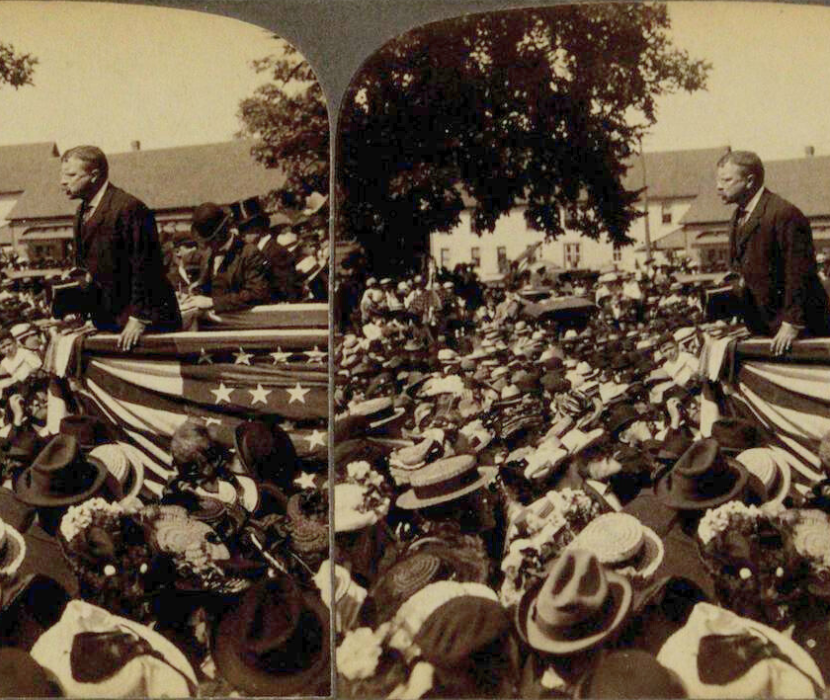
The Square Deal
By kirsten swinth.
Learn about themes of Progressive reform and Teddy Roosevelt's Square Deal.
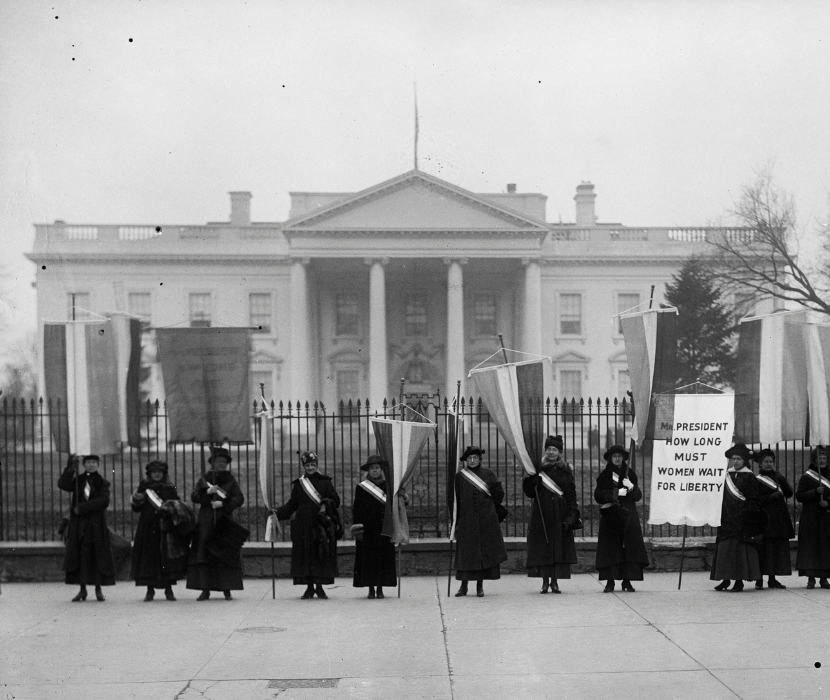
The Progressive Era to the New Era, 1900-1929
By daniel rodgers.
The Progressive Era to the New Era (1900-1929) Timeline and essay explaining the domestic and global challenges facing the US.
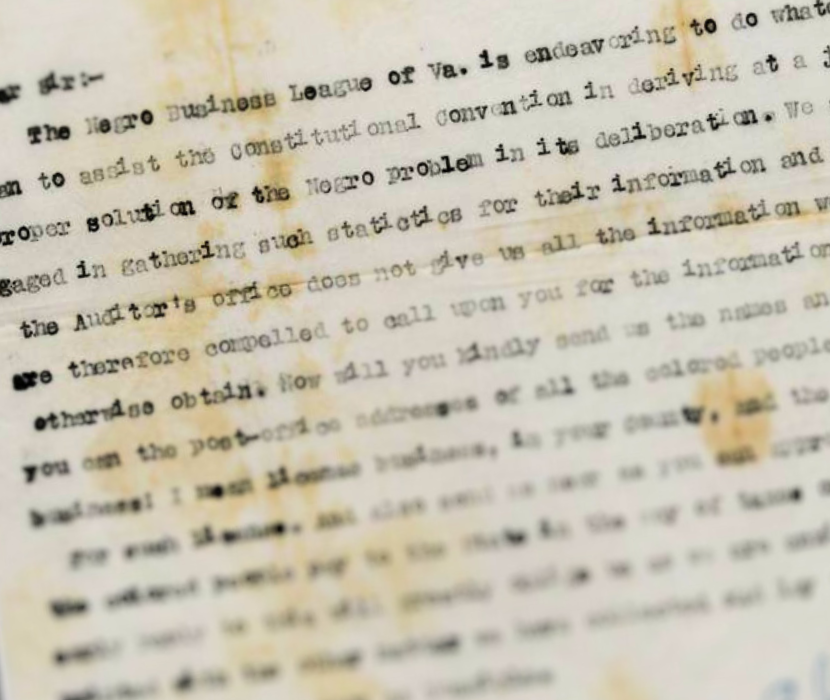
Disfranchisement of African American voters
Negro Business League response to legal bars to voting in Virginia
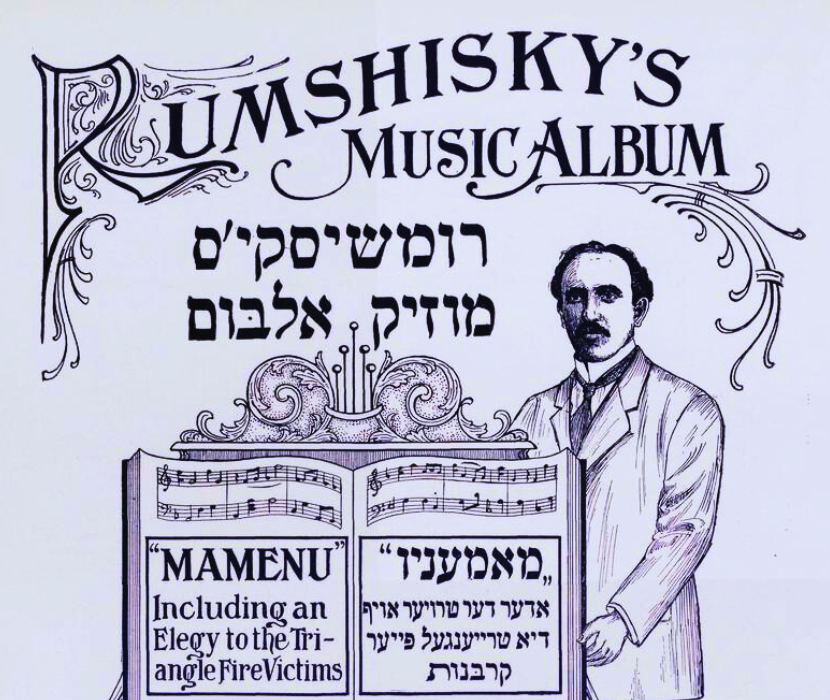
Triangle Shirtwaist Factory fire
Sheet music in Yiddish lamenting the deaths in Triangle Shirtwaist Factory fire
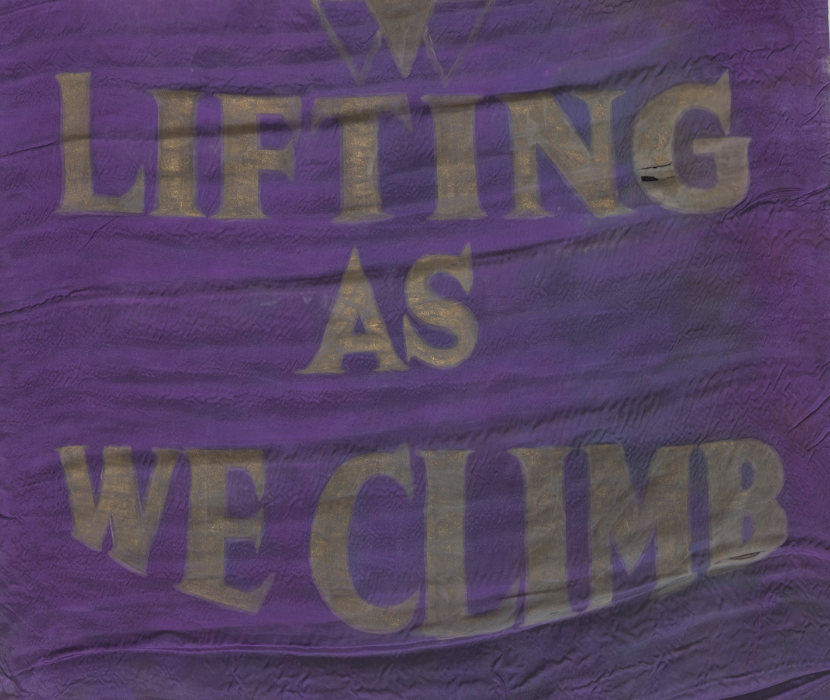
Women and the Progressive Movement
By miriam cohen.
Learn about the women who sought to address a variety of social problems associated with industrialization
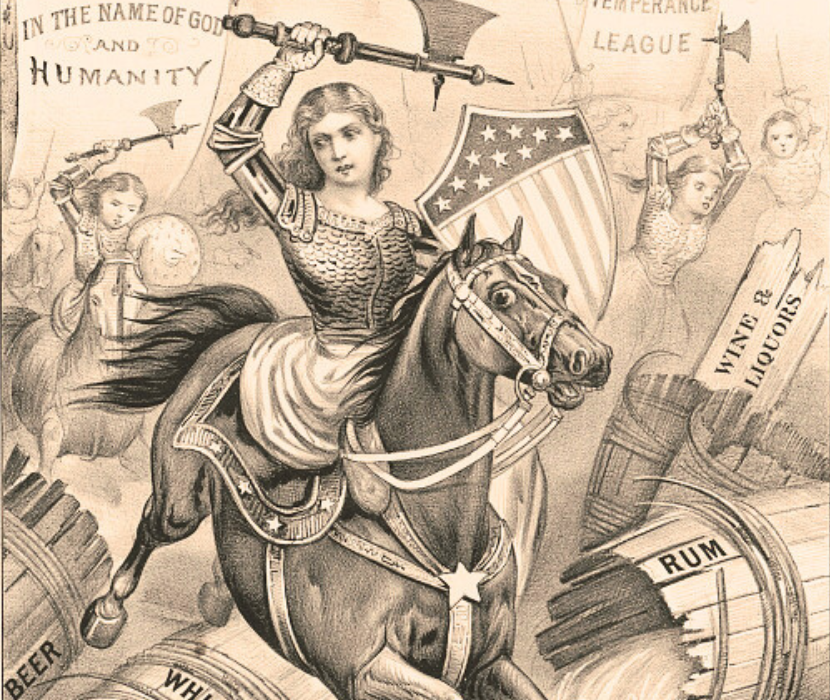
The Supreme Court upholds national prohibition
The Supreme Court upholds Prohibition and the Volstead Act
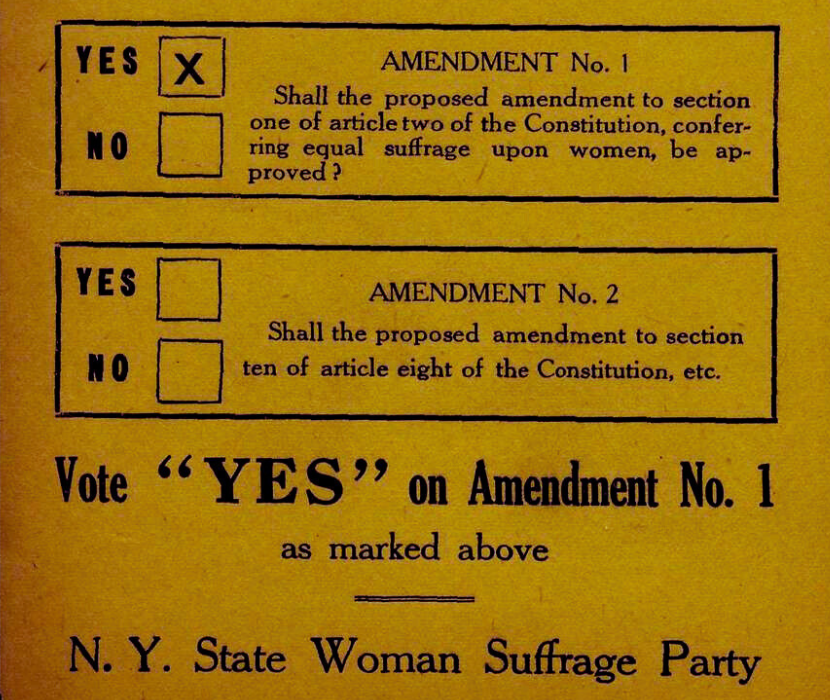
Modern Women Persuading Modern Men
By jonathan soffer .
Learn about the women's struggle for suffrage.
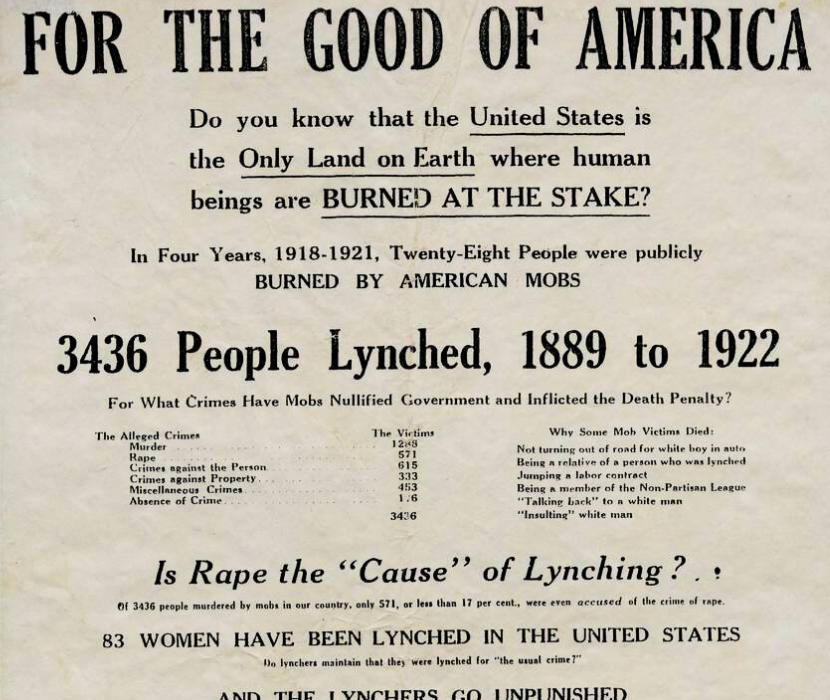
Lynching in America
NAACP broadside presenting the shocking statistics regarding lynching in America
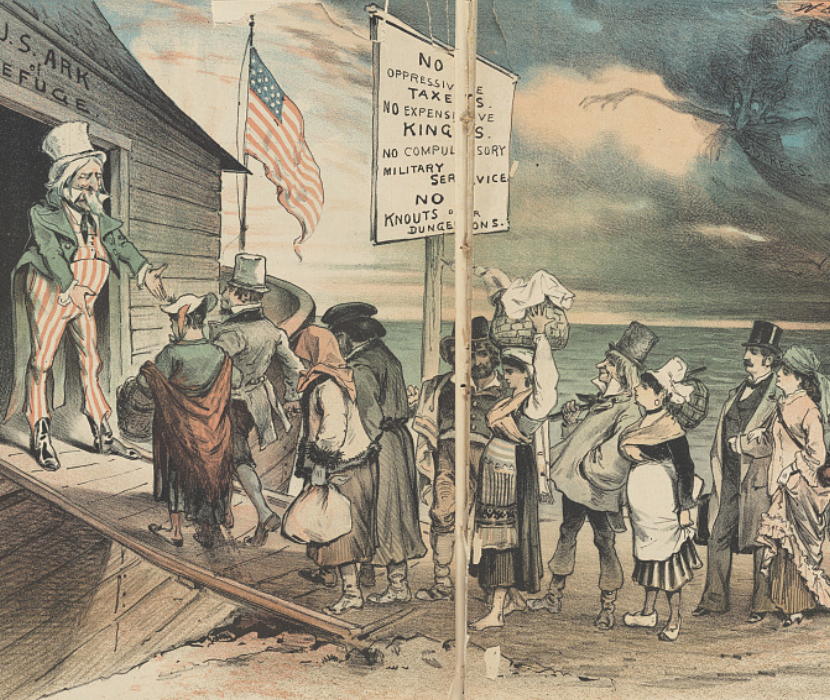
The Quest for Equality: European Immigration
By matthew jacobson.
Learn about the arrival of immigrants from Europe in the context of the Progressive era.
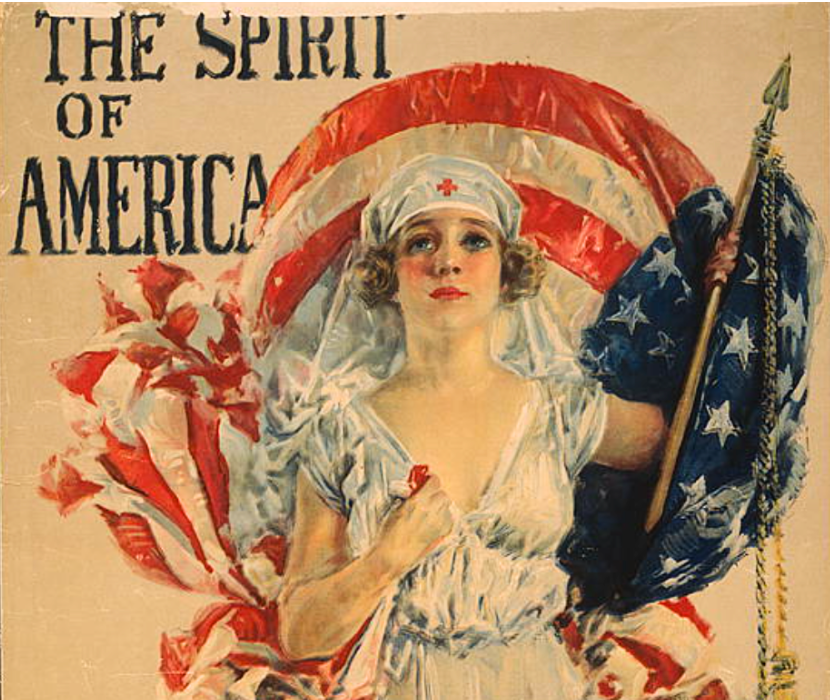
World War I poems: “In Flanders Fields” & “The Answer"
Nurse's diary containing McCrae’s poem reflecting upon the horrors of WWI
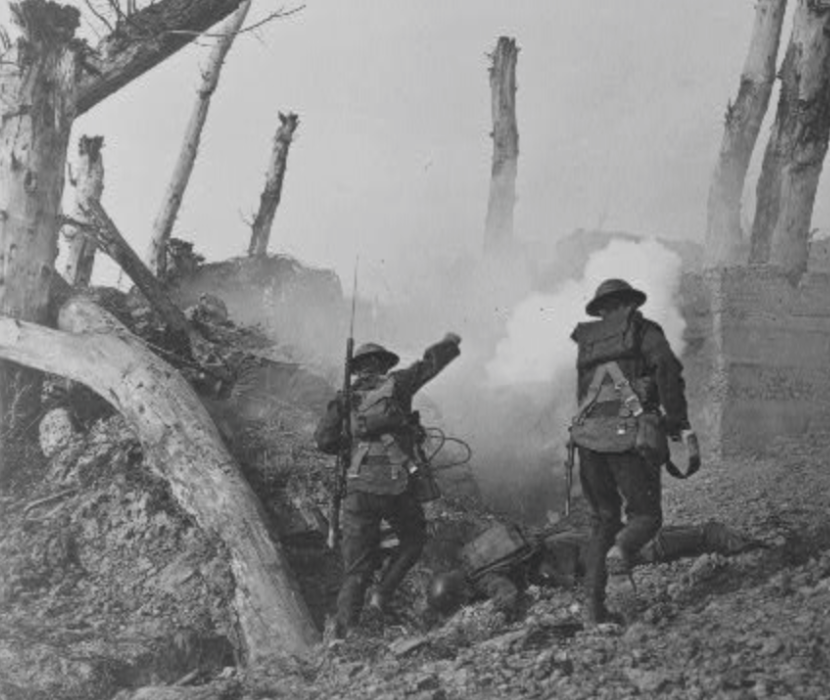
by Jennifer D. Keene
Learn about America's role in WWI.
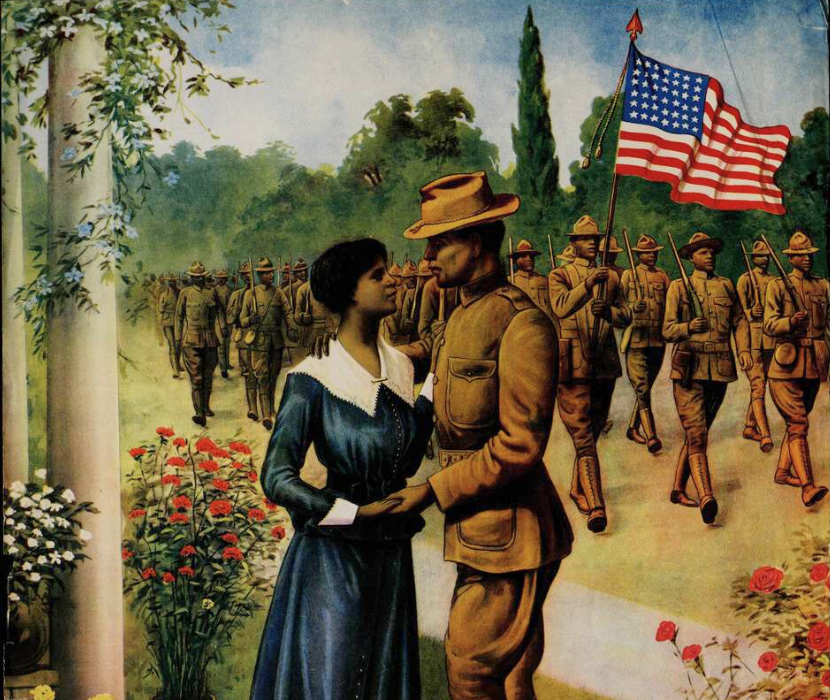
Recruiting posters for African American soldiers
Military recruitment of Black troops during World War I
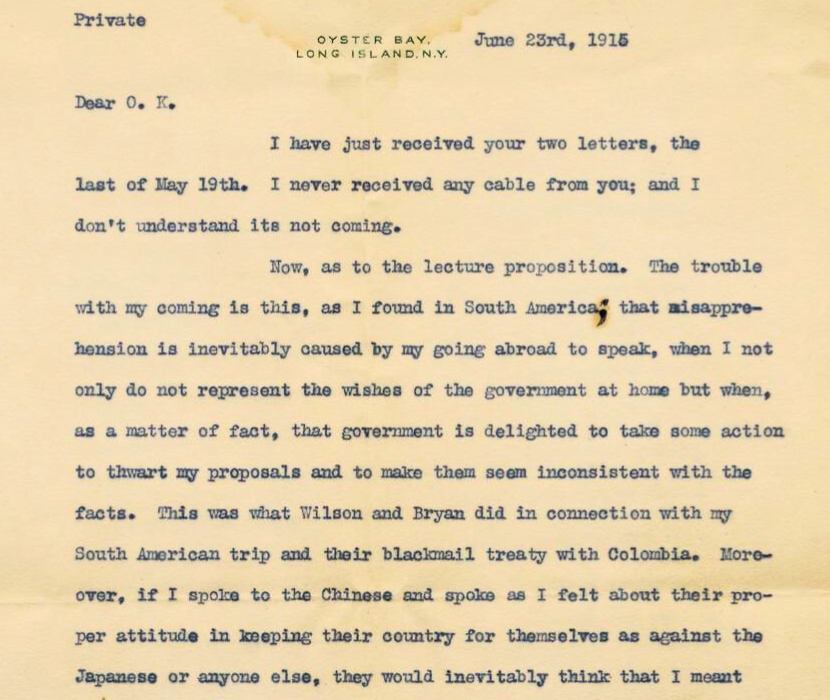
Theodore Roosevelt on the sinking of the Lusitania
Former president urges US involvement in WWI
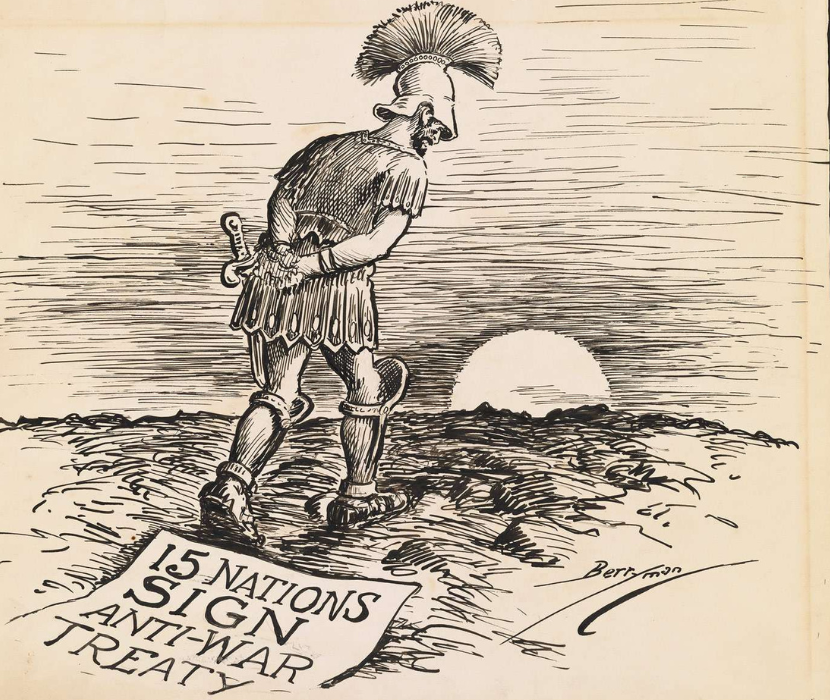
America's role in the world
By michael neiberg.
Read about American foreign policy between the world wars.
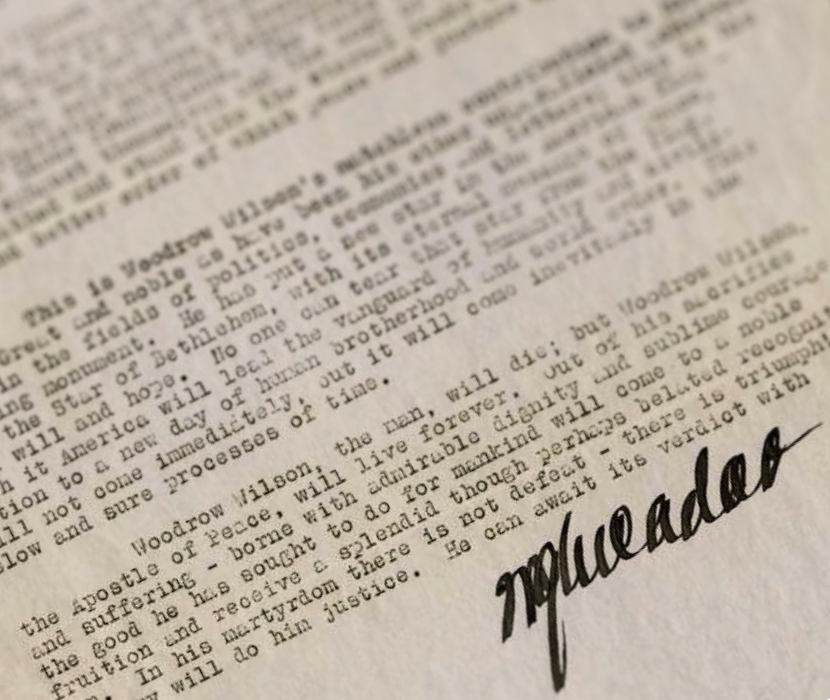
Treaty of Versailles and President Wilson
1919 and 1921.
Former Cabinet secretary's statement that "Woodrow Wilson did not fail"
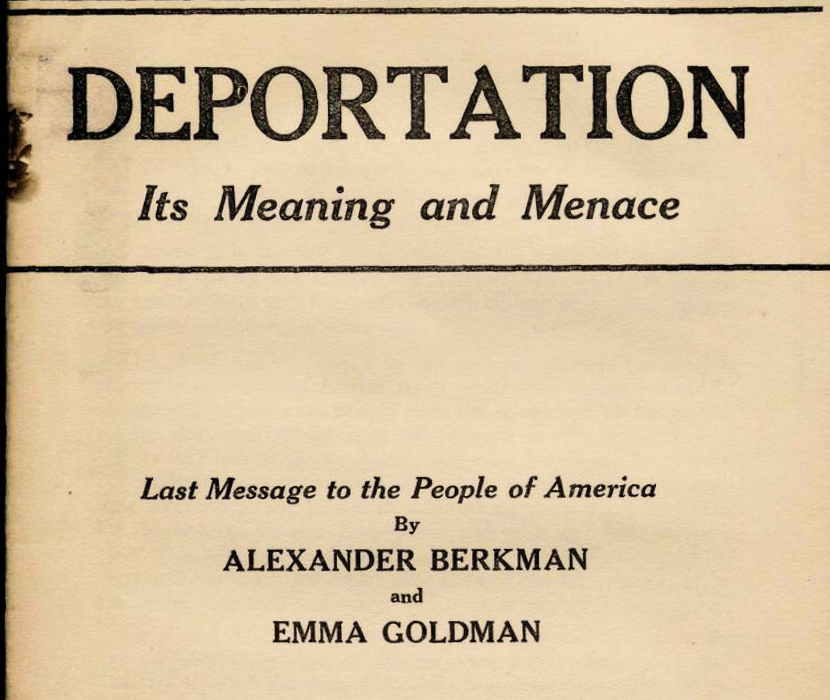
Deportation: Its Meaning and Menace
Pamphlet criticizing the US government for its use of the Espionage and Sedition Acts
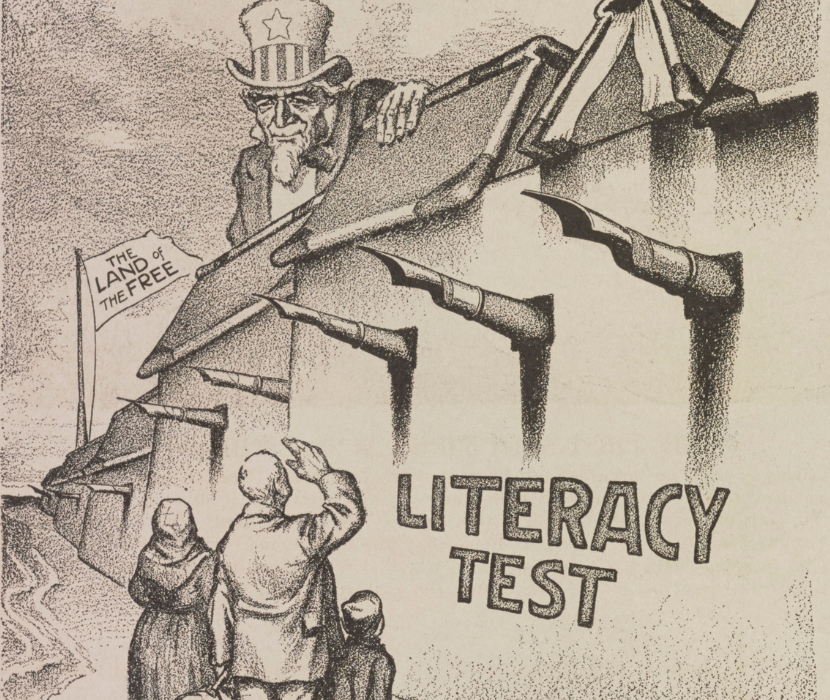
The Dillingham Commission
By robert zeidel.
Learn about the background to the 1917 Literacy Test Act and the 1921 Quota Act.
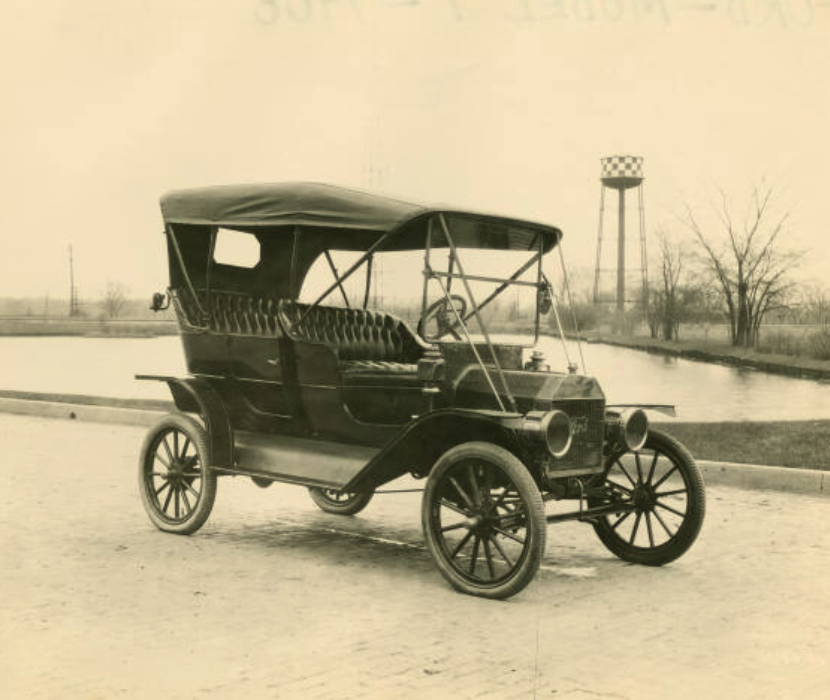
The Rise of Consumerism in the 1920s
By michael flamm.
Listen to a discussion about purchasing power, occupation, and identity
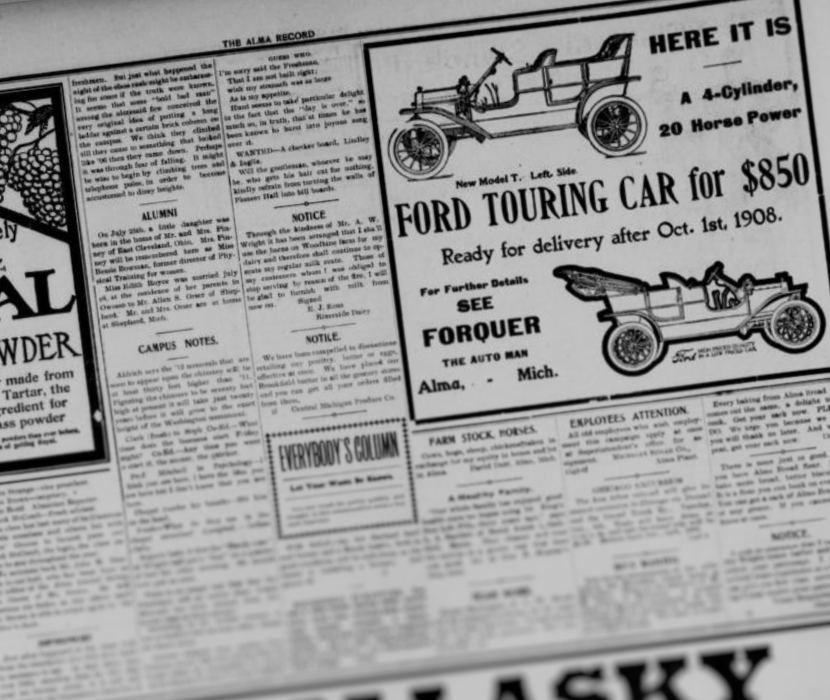
Motor City: The Story of Detroit
By thomas sugrue.
Read about the origins of Henry Ford's factory system in Detroit and its legacy.
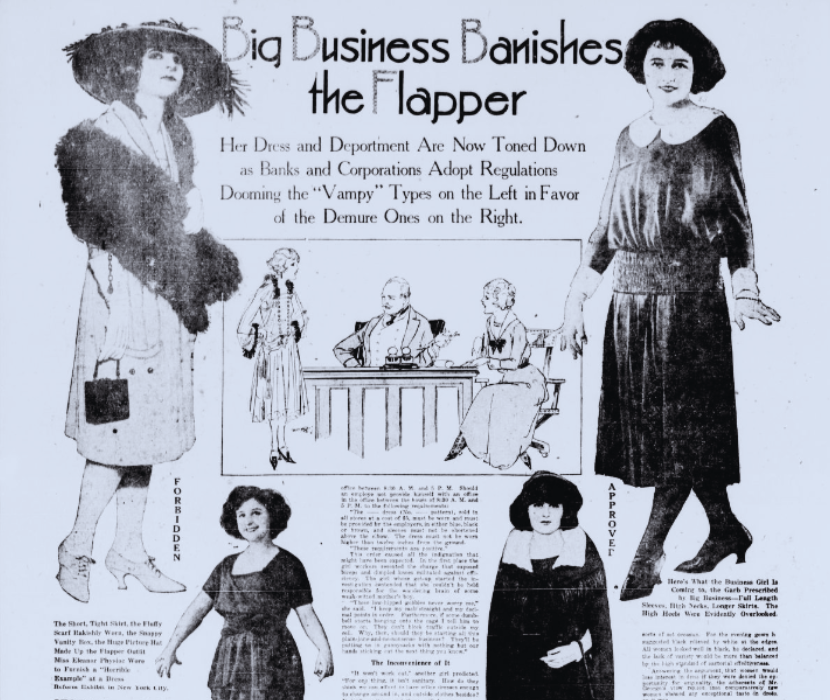
The Roaring Twenties
By joshua zeitz.
Examine why the 1920s heralded a dramatic break in American social, economic, and political policies.
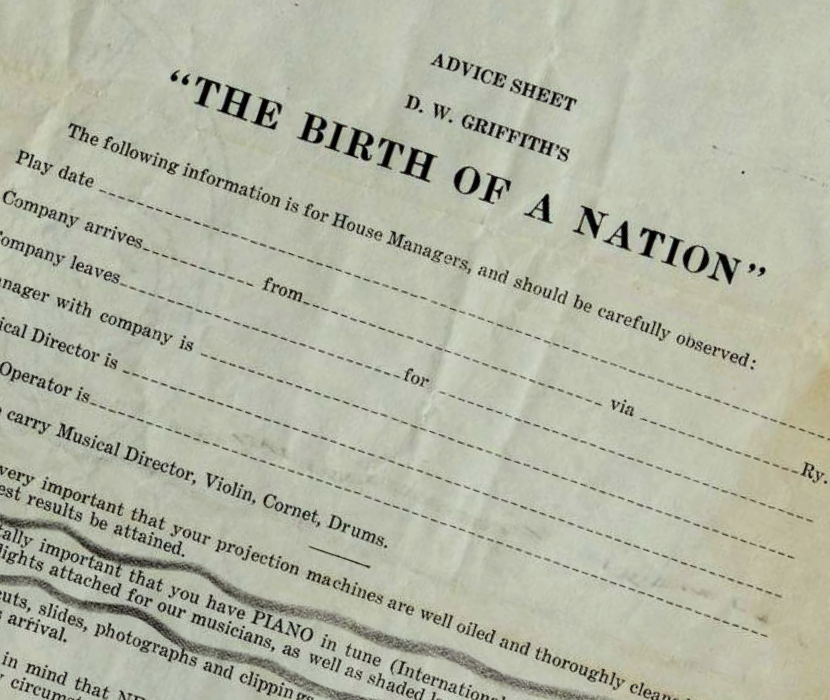
Birth of a Nation
"Advice Sheet" for theaters restricting access to Birth of a Nation for African Americans
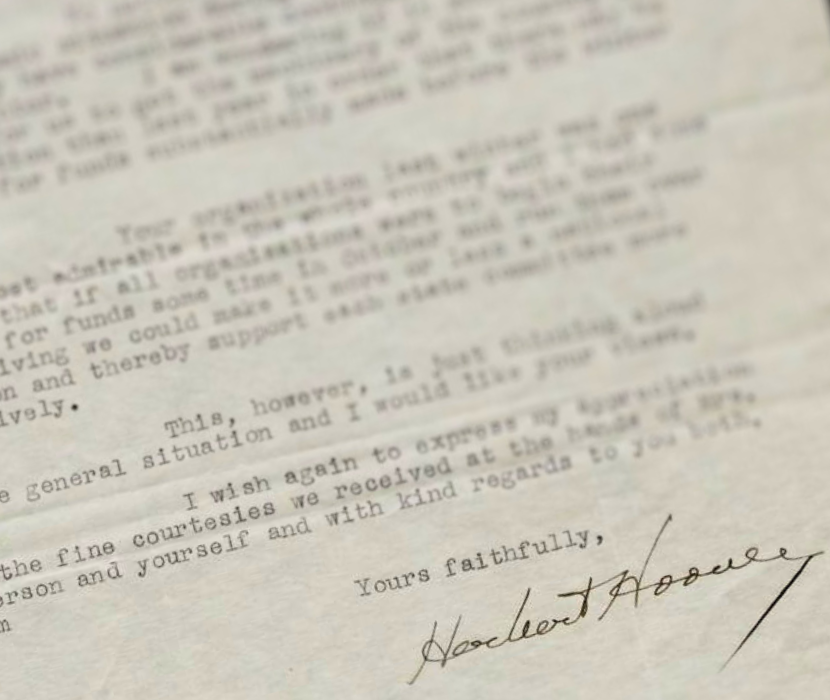
The Great Depression
By david kennedy.
Learn about some of the causes and consequences of the Great Depression.
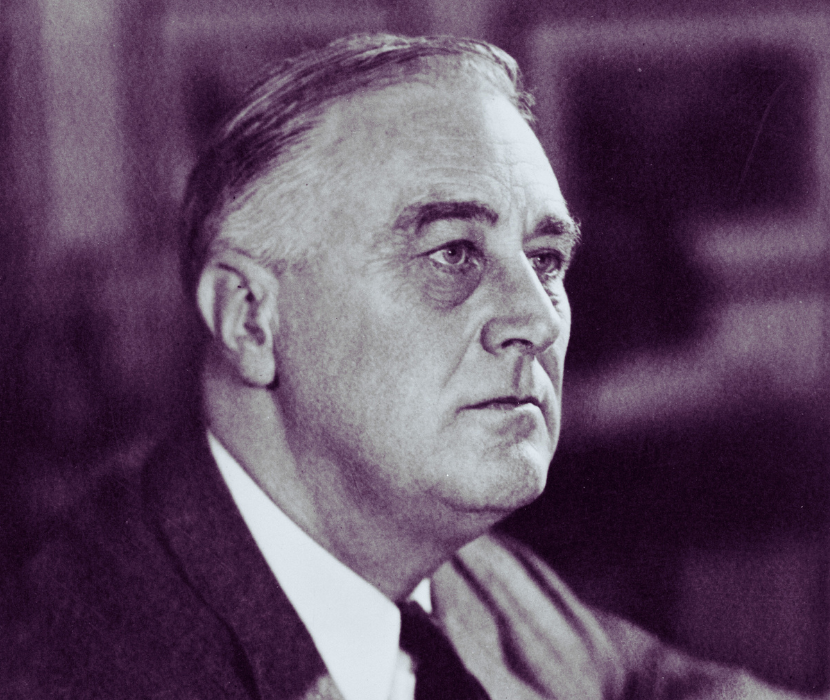
The New Deal
By thomas kessner.
Learn about FDR's New Deal.
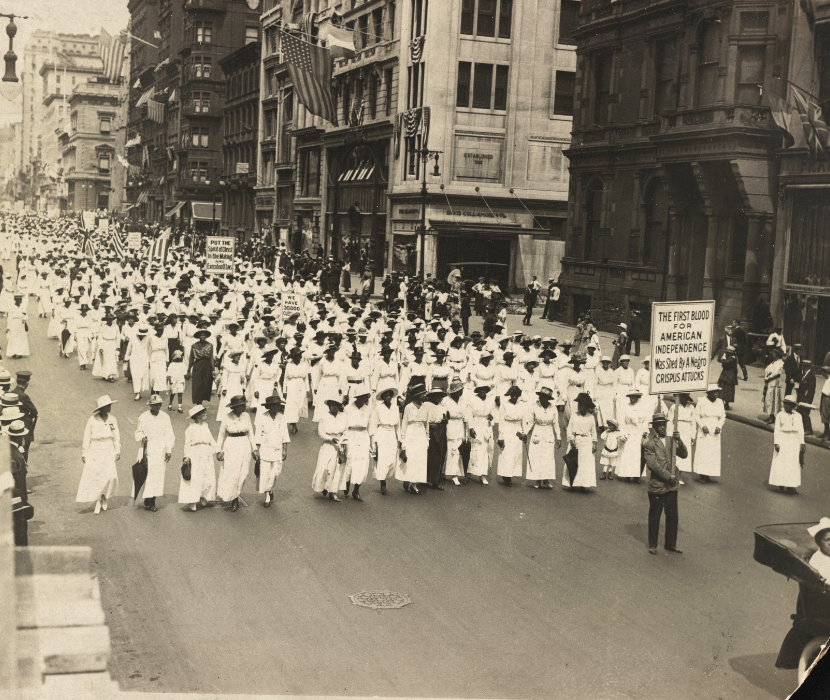
Jim Crow and the Great Migration
By jonathan scott holloway.
Learn about the reasons behind the Great Migration.
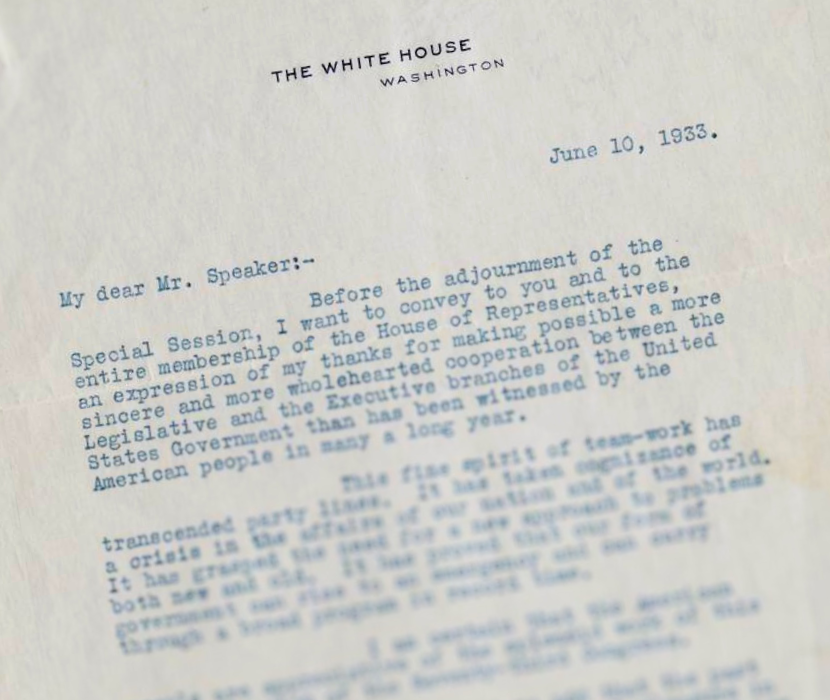
The Hundred Days and Beyond
By anthony j. badger.
Understand how the New Deal functioned as a "laboratory for economic learning."
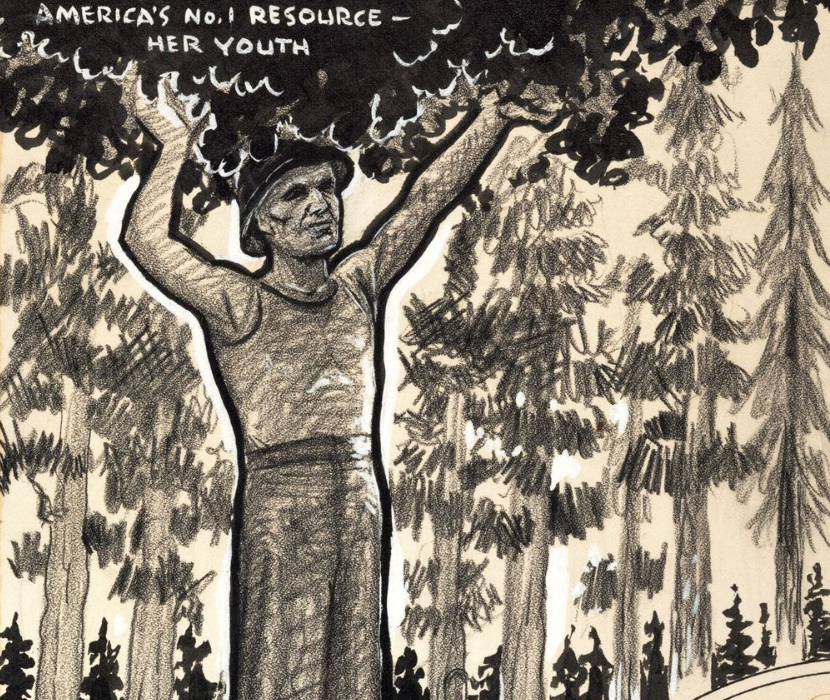
Civilian Conservation Corps poster
Enlistment poster for the CCC, which put young men to work improving parks and creating infrastructure
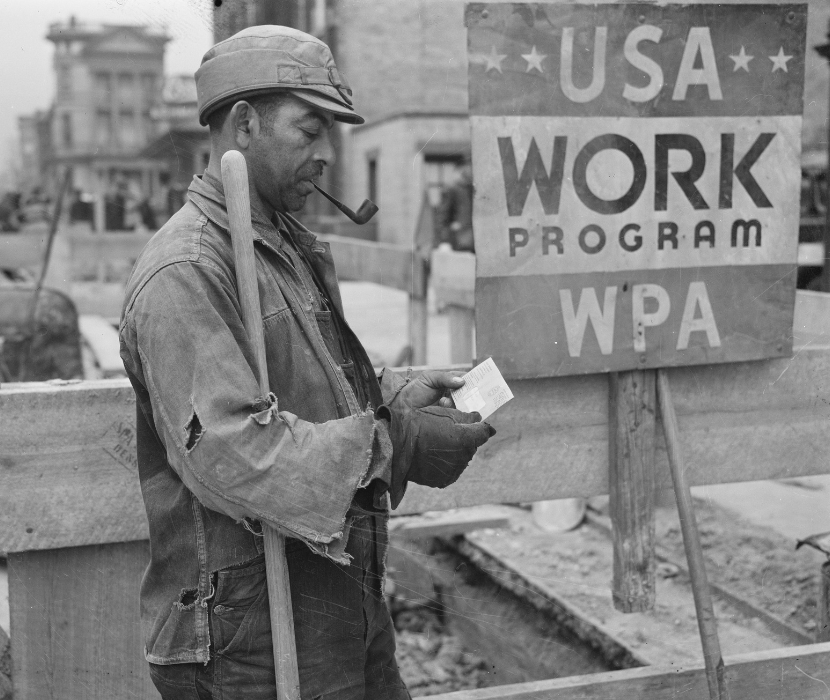
Why the New Deal Matters
By eric rauchway .
Watch a discussion of FDR's New Deal.
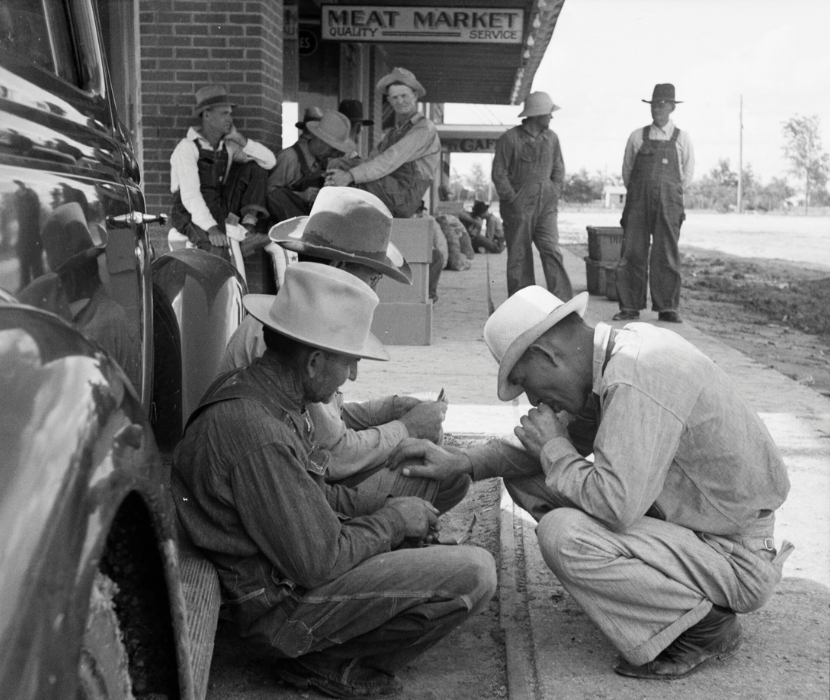
Photograph of an abandoned farm in the Dust Bowl
Dorothea Lange photograph depicting the devastation caused by the Dust Bowl
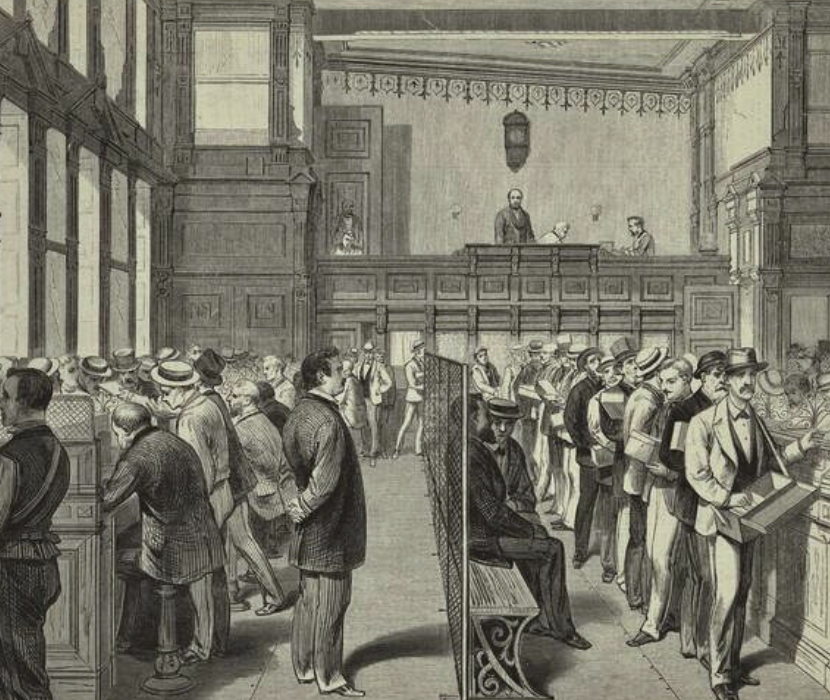
The US Banking System
By richard sylla.
Read about the emergence of the banking industry in the United States.
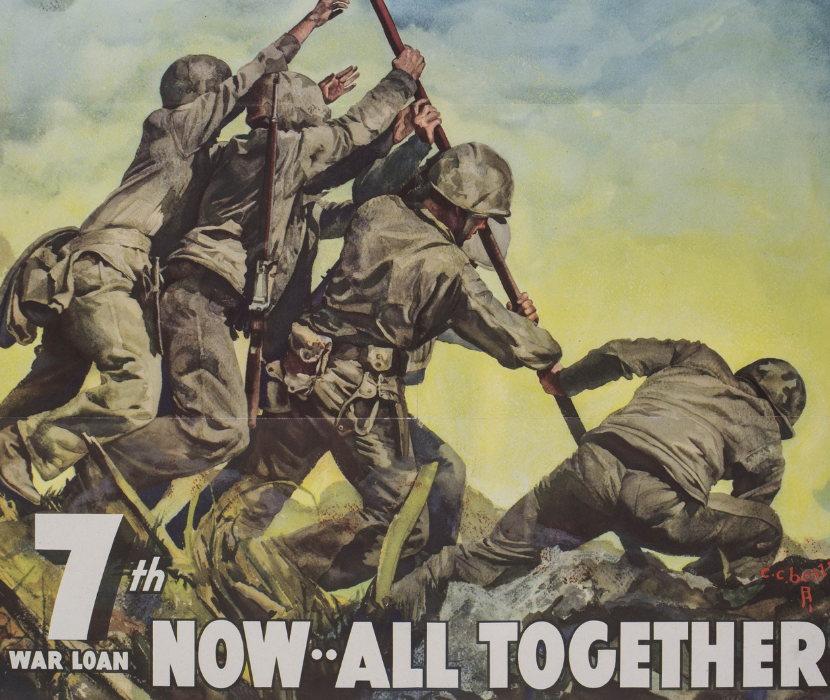
by Kenneth T. Jackson
Learn about US involvement in WWII.
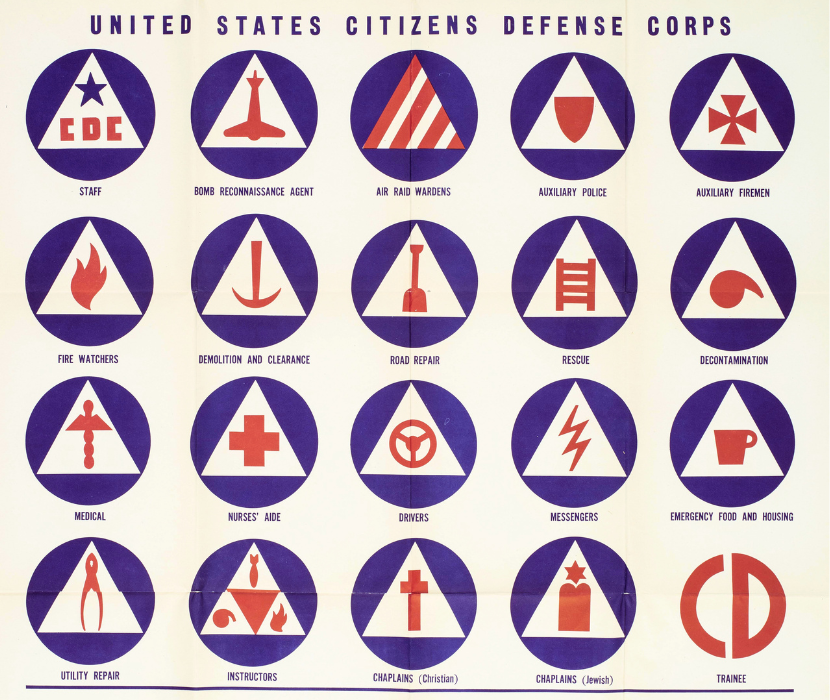
Civilian defense on the home front
Excerpt from The US Citizens Defense Corp handbook explaining the duties and responsibilities of home-front volunteers
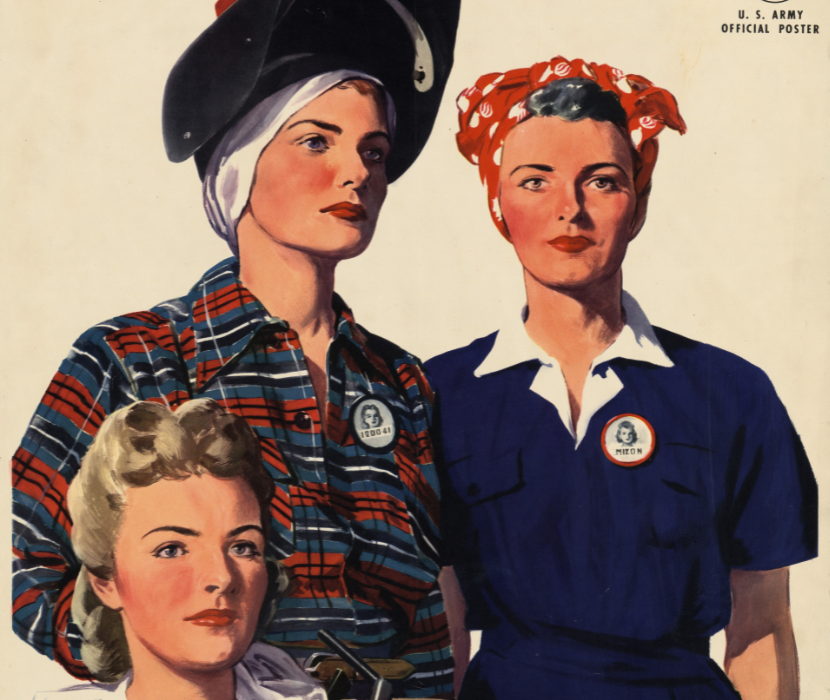
The World War II Home Front
By allan m. winkler.
Learn how activities on the home front supported US efforts during WWII.
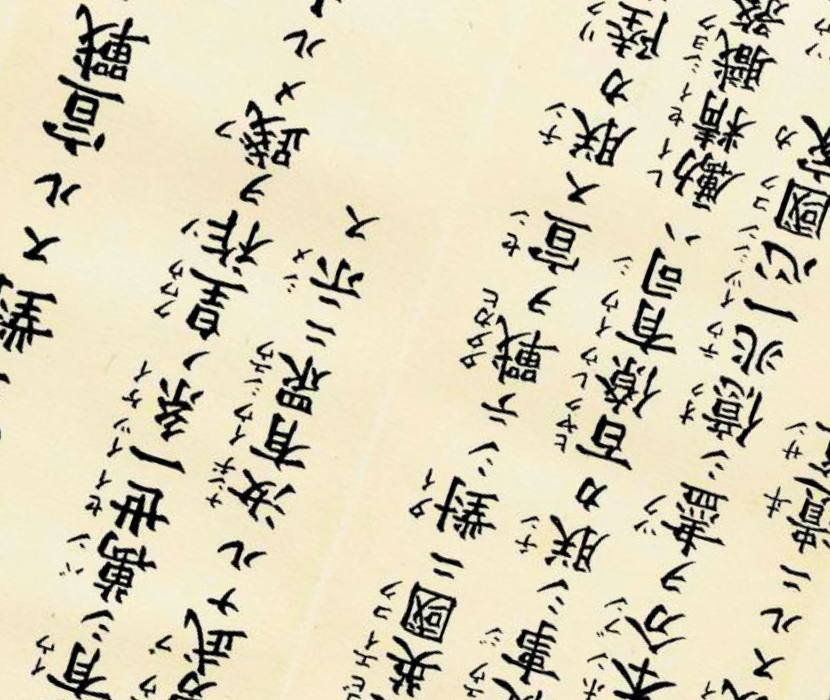
Japan declares war
Japan's Declaration of War coinciding with the attach on Pearl Harbor
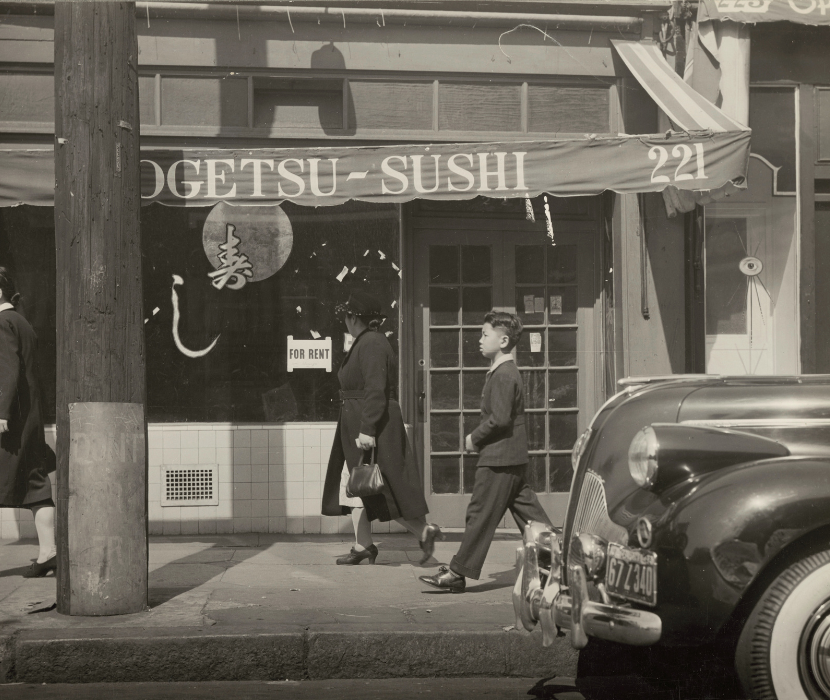
From Citizen to Enemy
Learn about the internment of Japanese Americans during WWII.

Japanese internment
Broadside instructing the Japanese "to assemble for transport to detention camps"
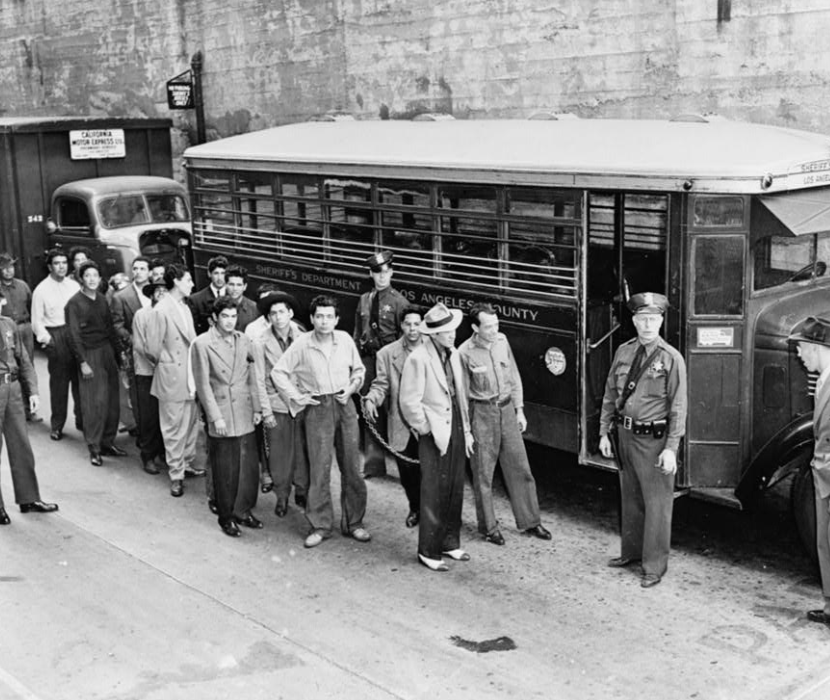
An Introduction to the History of the Zoot Suit Riots
By elizabeth escobedo.
Learn about the intersection of World War II, Pachuco/a youth culture, fashion, and music in the City of Angels.
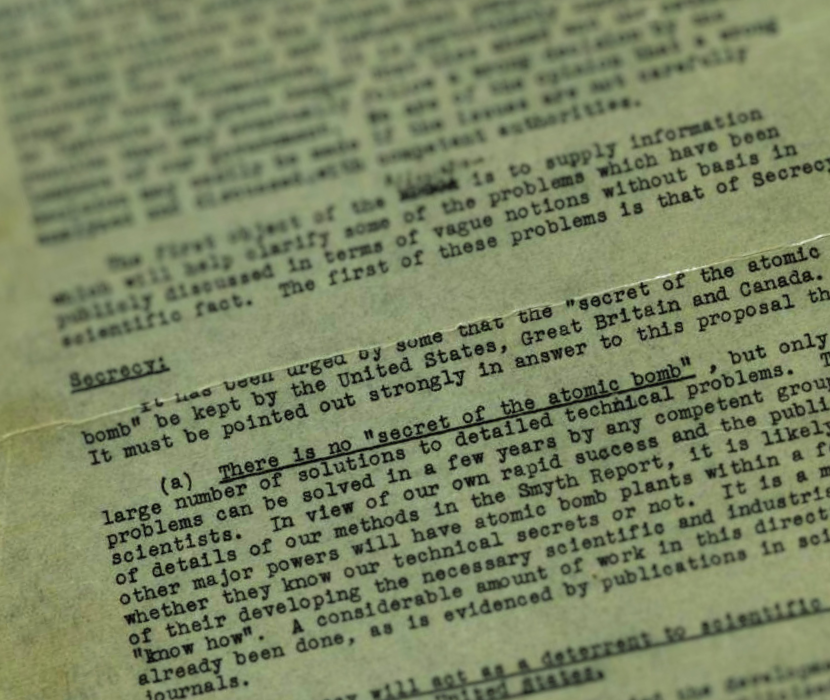
Physicists predict a nuclear arms race
"Preliminary Statement of the Association of Manhattan District Scientists" emphasizing the need to control atomic weaponry
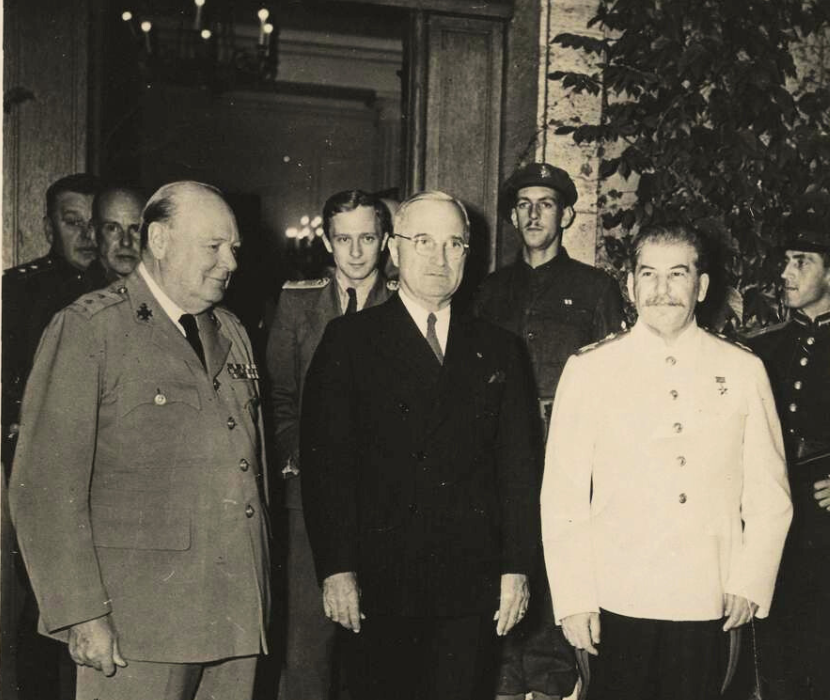
Truman and His Doctrine
By elizabeth edwards spalding.
Read about how and why Truman devised a strategy of containment
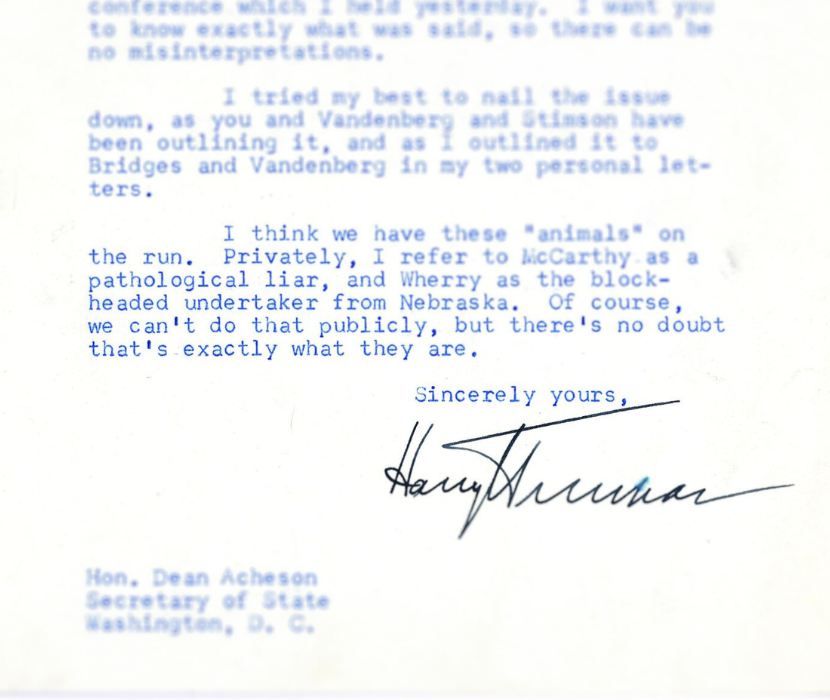
Harry S. Truman responds to McCarthy
Truman response to McCarthy, characterizing him as "the best asset that the Kremlin can have"
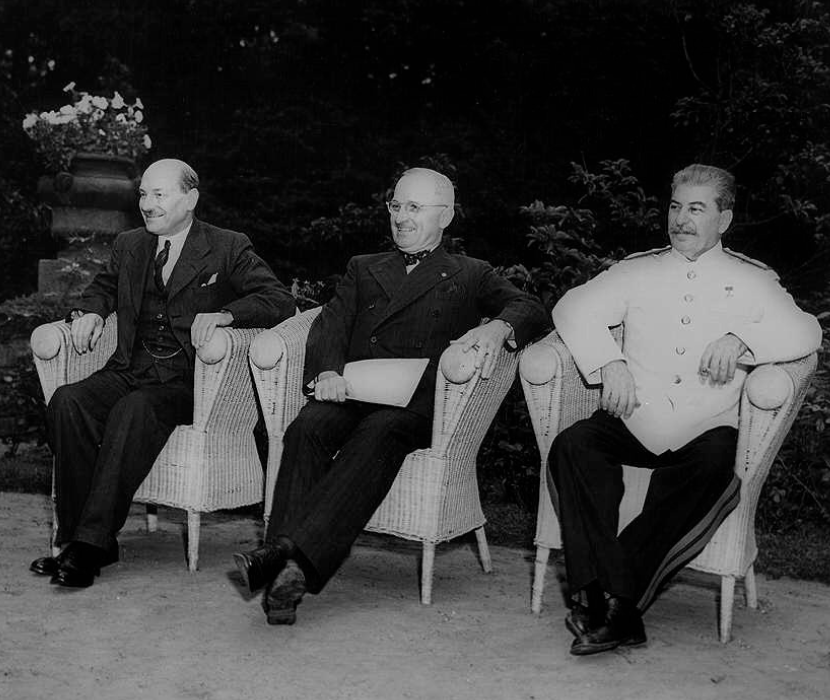

The Origins of the Cold War
By john lewis gaddis.
Learn about U.S.-Soviet relations from the nineteenth century through the end of World War II.
American History Timeline: 1890-1945
Image citations.
Listed in order of appearance in the sections above
- Keppler, Udo J. "His 128th birthday. 'Gee, But This Is an Awful Stretch!'" Puck, June 29, 1904. Library of Congress Prints and Photographs Division.
- Currier & Ives. Our Victorious Fleets in Cuban Waters. New York, 1898. Chromolithograph. The Gilder Lehrman Institute of American History, GLC03534.
- Ehrhart, Samuel D. "If They'll Only Be Good." Puck, January 31, 1900. Library of Congress Prints and Photographs Division.
- Ricalton, James. West from Ha-ta-men Gate along Huge Ancient Wall between Tartar and Chinese Peking, Scene of a Desperate Charge during Siege - China. New York: Underwood & Underwood, 1901. Photograph. Library of Congress Prints and Photographs Division.
- Keppler, Udo J. "The Tug of War in the Far East." Puck, September 14, 1898. Library of Congress Prints and Photographs Division.
- Riis, Jacob A. Street Arabs in "sleeping quarters." New York, ca. 1888. Photograph. Library of Congress Prints and Photographs Division.
- Woman Suffrage Procession, Washington, DC. Official Program. March 3, 1913. Library of Congress Rare Book and Special Collections Division.
- Underwood & Underwood. "Good Government Is Practically Applying the Principles Which Make a Man a Good Citizen" - President [Theodore] Roosevelt, Waterville, Maine. 1902. Stereoview. The Gilder Lehrman Institute of American History, GLC06449.22.
- Harris & Ewing. Woman Suffrage Pickets at White House. Washington, DC, 1917. Photograph. Library of Congress Prints and Photographs Division.
- Jackson, Giles B. Letter to R. C. Burrow, June 22, 1901. The Gilder Lehrman Institute of American History, GLC08907.
- Rumshisky, Joseph, and Anshel Schorr. "'Mamenu' or The Triangle Victims" (in Yiddish). New York: Hebrew Publishing Co., 1911. The Gilder Lehrman Institute of American History, GLC06225.
- National Association of Colored Women’s Club. "Lifting As We Climb." Banner, ca. 1924. silk (fiber), wood, paint.
- Currier & Ives. Woman's Holy War :Grand Charge on the Enemy's Works. New York, 1874. Lithograph. Library of Congress Prints and Photographs Division.
- N. Y. State Woman Suffrage Party. How to Vote for Woman Suffrage Amendment, Election Day, November 6th, 1917. Albany, NY, 1917. The Gilder Lehrman Institute of American History, GLC08961.
- National Association for the Advancement of Colored People. For the Good of America. New York, ca. 1926. The Gilder Lehrman Institute of American History, GLC06197.
- Keppler, J. "Welcome to All," Puck, April 28, 1880. Color lithograph. Library of Congress Prints and Photographs Division.
- Chandler, Howard John. The Spirit of America -- Join. American Red Cross, 1919. Color lithograph. Library of Congress Prints and Photographs Division.
- Come Out! [Volume 1, No. 2 (January 10, 1970)] Newspaper, GLC09872.02
- Renesch, Edward George. Colored Man Is No Slacker. Chicago, 1918. The Gilder Lehrman Institute of American History, GLC06134.
- Roosevelt, Theodore. Letter to Oscar King Davis, June 23, 1915. The Gilder Lehrman Institute of American History, GLC08003.
- Berryman, Clifford Kennedy. 15 Nations Sign Anti-war Treaty. August 27, 1928. Berryman Political Cartoon Collection, 1896-1949; Records of the U.S. Senate, Record Group 46. National Archives.
- McAdoo, William G. Statement given out by Ex-Secreatry of the Treasury on Woodrow Wilson, March 4, 1921. The Gilder Lehrman Institute of American History, GLC03967.
- Berkman, Alexander, and Emma Goldman. Deportation, Its Meaning and Menace. New York, 1918. The Gilder Lehrman Institute of American History, GLC06222.
- Evans, Raymond Oscar. “The Americanese Wall, as Congressman Burnett Would Build It .” Puck, March 25, 1916. Library of Congress Prints and Photographs Division.
- Unknown photographer. The First Model T Ford. New York, 1908. Photograph. New York Public Library Digital Collections.
- Ford Touring Car advertisement. Alma (Mich.) Record, October 1, 1908, p. 4. Chronicling America: Historic American Newspapers. Library of Congress.
- "Big Business Banishes the Flapper." Morning Tulsa Daily World, July 16, 1922. Chronicling America: Historic American Newspapers. Library of Congress.
- Edwards, Jack. "Advice Sheet. D. W. Griffith's 'The Birth of a Nation.'" ca. 1915. The Gilder Lehrman Institute of American History, GLC05091.
- Hoover, Herbert. Letter to Louis L. Emmerson, July 10, 1931. The Gilder Lehrman Institute of American History, GLC03146.
- Harris & Ewing. President Franklin D. Roosevelt. Washington DC, ca. 1941. Photograph. Library of Congress Prints and Photographs Division.
- Underwood & Underwood. Silent Protest Parade in New York City against the East St. Louis Riots. New York, 1917. Photograph. Library of Congress Prints and Photographs Division.
- Roosevelt, Franklin D. Letter to Henry T. Rainey, June 10, 1933. The Gilder Lehrman Institute of American History, GLC07468.
- Arizona Civilian Conservation Corps. "Great Oaks from Little Acorns." 1938. Recruitment poster. The Gilder Lehrman Institute of American History, GLC06196.262.
- Unknown photographer. Photograph of Works Progress Administration Worker Receiving Paycheck. January 1939. Photograph. Record Group 594956. WPA Information Division Photographic Index. National Archives.
- Lange, Dorothea. Dust Bowl Farmers of West Texas in Town. Farm Security Administration/Office of War Information, June 1937. Photograph. Library of Congress Prints and Photographs Division.
- Pennsylvania. Two shilling and Six-pence note, No. 4665. April 3, 1772. Printed by Hall and Sellers. Signed by Cadwalader Morris, Joseph Swift, and Samuel Hudson. The Gilder Lehrman Institute of American History, GLC01450.226.01.
- United States. War Division. 7th war loan/now all together. Poster. 1945. The Gilder Lehrman Institute of American History, GLC09520.34.
- US Office of Civilian Defense. Special Civilian Defense Insignia. 1942. Poster. The Gilder Lehrman Institute of American History, GLC09520.36.
- Treidler, Adolph, and US Army. Soldiers Without Guns. Washington DC: US Government Printing Office, 1944. Library of Congress Prints and Photographs Division.
- Hirohito, Emperor of Japan. Declaration of War against the United States and Britain [in Japanese]. December 8, 1941. The Gilder Lehrman Institute of American History, GLC01415.
- Albers, Clem. Los Angeles, Calif. Apr. 1942. A store for rent in “Little Tokyo” after residents of Japanese ancestry were assigned to War Relocation Authority centers for the duration. Washington DC: War Relocation Authority, April 11, 1942. Photograph. Library of Congress Prints and Photographs Division.
- DeWitt, J. L. US Army. Instructions to All Persons of Japanese Ancestry. May 3, 1942. Broadside. The Gilder Lehrman Institute of American History, GLC06360.
- Acme Newspictures. Zoot suiters lined up outside Los Angeles jail en route to court after feud with sailors. Los Angeles, CA, June 9, 1943. Photograph. New York World-Telegram and the Sun Newspaper Photograph Collection. Library of Congress Prints and Photographs Division.
- Kaplan, Irving. "Preliminary Statement of the Association of Manhattan District Scientists." ca. August 1945. The Gilder Lehrman Institute of American History, GLC03152.02.
- United States. Army. Signal Corps. Winston Churchill, Harry Truman, and Joseph Stalin at Potsdam. ca. July-August 1945. Photograph. The Gilder Lehrman Institute of American History, GLC04457.
- Truman, Harry S. Letter to Dean Acheson, March 31, 1950. The Gilder Lehrman Institute of American History, GLC00782.22.
- Clement Attlee, Harry Truman, and Joseph Stalin, seated outdoors at Berlin conference. Germany Potsdam, 1945. Aug. 1. Photograph. https://www.loc.gov/item/96522042/ .
Stay up to date, and subscribe to our quarterly newsletter.
Learn how the Institute impacts history education through our work guiding teachers, energizing students, and supporting research.
If you're seeing this message, it means we're having trouble loading external resources on our website.
If you're behind a web filter, please make sure that the domains *.kastatic.org and *.kasandbox.org are unblocked.
To log in and use all the features of Khan Academy, please enable JavaScript in your browser.
Unit 7: Period 7: 1890-1945
About this unit.
By the early 20th century, the US had become a global power, actively engaging in foreign policy and imperialism. Explore how this position was bouyed by industrial and technical progress - and tested by two world wars. You'll also connect economic and social trends of the times to the progressive ideas and policies that arose during this period.
Contextualizing Period 7
- Introduction to the age of empire (Opens a modal)
Imperialism: debates
- The age of empire (Opens a modal)
- Imperialism: debates Get 3 of 4 questions to level up!
The Spanish-American War
- The Spanish-American War (Opens a modal)
- Spanish-American War Get 3 of 4 questions to level up!
The Progressives
- The Progressives (Opens a modal)
- The Progressive Era (Opens a modal)
- Muckrakers (Opens a modal)
- The presidency of Theodore Roosevelt (Opens a modal)
- The Nineteenth Amendment (Opens a modal)
- The Progressives Get 3 of 4 questions to level up!
World War I: military and diplomacy
- The presidency of Woodrow Wilson (Opens a modal)
- Blockades, u-boats and sinking of the Lusitania (Opens a modal)
- Zimmermann Telegram (Opens a modal)
- United States enters World War I (Opens a modal)
- Woodrow Wilson's Fourteen Points (Opens a modal)
- Paris Peace Conference and Treaty of Versailles (Opens a modal)
- More detail on the Treaty of Versailles and Germany (Opens a modal)
- The Treaty of Versailles (Opens a modal)
- The League of Nations (Opens a modal)
- World War I: military & diplomacy Get 3 of 4 questions to level up!
World War I: home front
- The United States in World War I (Opens a modal)
- World War I: Homefront (Opens a modal)
- World War I: Homefront Get 3 of 4 questions to level up!
1920s: innovations in communication and technology
- 1920s consumption (Opens a modal)
- American culture in the 1920s (Opens a modal)
- 1920s: innovations in communication and technology Get 3 of 4 questions to level up!
1920s: cultural and political controversies
- 1920s urbanization and immigration (Opens a modal)
- The reemergence of the KKK (Opens a modal)
- Prohibition (Opens a modal)
- Republican ascendancy: politics in the 1920s (Opens a modal)
- The presidency of Calvin Coolidge (Opens a modal)
- 1920s: cultural and political controversies Get 3 of 4 questions to level up!
The Great Depression
- The presidency of Herbert Hoover (Opens a modal)
- The Great Depression (Opens a modal)
- Great Depression Get 3 of 4 questions to level up!
The New Deal
- FDR and the Great Depression (Opens a modal)
- The New Deal (Opens a modal)
- The New Deal Get 3 of 4 questions to level up!
Interwar foreign policy
- Beginning of World War II (Opens a modal)
- 1940 - Axis gains momentum in World War II (Opens a modal)
- 1941 Axis momentum accelerates in WW2 (Opens a modal)
- Pearl Harbor (Opens a modal)
- Interwar foreign policy Get 3 of 4 questions to level up!
World War II: mobilization
- FDR and World War II (Opens a modal)
- Japanese internment (Opens a modal)
- American women and World War II (Opens a modal)
- World War II: mobilization Get 3 of 4 questions to level up!
World War II: military
- 1942 Tide turning in World War II in Europe (Opens a modal)
- World War II in the Pacific in 1942 (Opens a modal)
- 1943 Axis losing in Europe (Opens a modal)
- American progress in the Pacific in 1944 (Opens a modal)
- 1944 - Allies advance further in Europe (Opens a modal)
- 1945 - End of World War II (Opens a modal)
- The Manhattan Project and the atomic bomb (Opens a modal)
- World War II: military Get 3 of 4 questions to level up!
Postwar diplomacy
- The United Nations (Opens a modal)
- Postwar diplomacy Get 3 of 4 questions to level up!
Comparison in Period 7
- Shaping American national identity from 1890 to 1945 (Opens a modal)
AP US History Practice Multiple-Choice Questions: Period 7: 1890–1945
Test information.

See All test questions
- » Do AP US History Practice Tests
- » Download AP US History Practice Tests
- » Best AP US History Books
More AP Tests
- AP US History Test 1
- AP US History Test 2
- AP US History Test 3
- AP US History Test 4
- AP US History Test 5
- AP US History Test 6
- AP US History Test 7
- AP US History Test 8
- AP US History Test 9
- AP US History Test 10
- AP US History Test 11
- AP US History Test 12
- AP US History Test 13
- AP US History Test 14
- AP US History Test 15
- AP US History Test 16
- AP US History Test 17
- AP US History Test 18
- AP US History Test 19
- AP US History Test 20
- AP US History Test 21
- AP US History Test 22
- AP US History Test 23
- AP US History Test 24
- AP US History Test 25
- AP US History Test 26
- AP US History Test 27
- AP US History Test 28
- AP US History Test 29
- AP US History Test 30
- AP US History Test 31
- AP US History Test 32
- AP US History Test: Early Contact with the New World (1491–1607) Colonization of North America (1607–1754)
- AP US History Test: Conflict and American Independence (1754–1800)
- AP US History Test: Beginnings of Modern American Democracy (1800–1848)
- AP US History Test: Toward the Civil War and Reconstruction (1844–1877)
- AP US History Test: The Industrial Revolution (1865–1898)
- AP US History Test: The Early Twentieth Century (1890–1945)
- AP US History Test: The Postwar Period and Cold War (1945–1980)
- AP US History Test: Entering Into the Twenty-First Century (1980–Present)
- AP US History Questions: Period 1: 1491–1607
- AP US History Questions: Period 2: 1607–1754
- AP US History Questions: Period 3: 1754–1800
- AP US History Questions: Period 4: 1800–1848
- AP US History Questions: Period 5: 1844–1877
- AP US History Questions: Period 6: 1865–1898
- AP US History Questions: Period 7: 1890–1945
- AP US History Questions: Period 8: 1945–1980
- AP US History Questions: Period 9: 1980–Present
Questions 1-2 refer to the following information.

1. The point of view of the cartoon above is that
2. A reader who supported the sentiment of the cartoon above would most likely have been in support of which of the following?
Questions 3-5 refer to the following information.
"This book tells the story of how industrial workers in one American city made sense of an era in our recent history [the 1930s] when the nation moved from a commitment to welfare capitalism to a welfare state [and] from a determination to resist the organization of its industrial work force to tolerating it."
—Lizabeth Cohen, Making a New Deal: Industrial Workers in Chicago, 1919–1939 , 1990
3. The changes described in the excerpt could best be attributed to
4. Which of the following most strongly sought to limit or reverse the changes described in the excerpt?
5. The changes described in the excerpt were later reinforced by initiatives associated with
Questions 6-7 refer to the following information.
"To cast this case into outlines of racial prejudice, without reference to the real military dangers which were presented, merely confuses the issue. Korematsu was not excluded from the Military Area because of hostility to him or his race. He was excluded because we are at war with the Japanese Empire, because the properly constituted military authorities feared an invasion of our West Coast and felt constrained to take proper security measures, because they decided that the military urgency of the situation demanded that all citizens of Japanese ancestry be segregated from the West Coast temporarily, and, finally, because Congress, reposing its confidence in this time of war in our military leaders—as inevitably it must—determined that they should have the power to do just this."
—Justice Hugo Black, writing for the majority opinion of the United States Supreme Court in Korematsu v. United States , 1944
6. The idea expressed in the excerpt demonstrates continuity with which of the following earlier Supreme Court decisions?
7. Which of the following was the most immediate result of the decision excerpted?
404 Not found

Choose Your Test
Sat / act prep online guides and tips, the ultimate guide to the ap us history exam.
Advanced Placement (AP)

The AP US History exam involves critical reading, writing, and in-depth analysis. It's not just about memorizing names and dates, but rather interpreting historical evidence quickly and accurately, recalling outside information on a topic, and synthesizing your ideas into a coherent argument.
In this guide, we'll give you a rundown of the format and structure of the AP US History test along with a brief content outline, sample questions, and some tips for a great score .
How Is the AP US History Exam Structured?
The next AP US History test will be administered on Friday, May 5, 2023, at 8 AM . This AP exam is three hours and 15 minutes long and consists of two main sections, each of which is divided into a Part A and a Part B.
Before we get into the details of each part, here's an overview of the US History test as a whole:
Section 1, Part A: Multiple Choice
The first section on the test is the multiple-choice section, which is worth 40% of your score and lasts for 55 minutes. You'll get 55 questions, each with four possible answer choices (labeled A-D); this means that you'll have about a minute per question on this part of the exam.
Most US History multiple-choice questions come in sets of three to four questions that require you to respond to certain stimuli, or sources, such as historical texts, graphs, and maps.
Section 1, Part B: Short Answer
Part B of Section 1 on the US History test requires you to answer three short-answer questions in 40 minutes , giving you about 13 minutes per question. It's worth 20% of your overall score.
The first two questions are required, but you get to choose between question 3 and question 4 for your third short answer . Here's what you can expect with each question:
Section 2, Part A: Document-Based Question
The Document-Based Question, or DBQ , is worth 25% of your final score and requires you to write an essay based on a prompt that's accompanied by seven historical documents . You'll get a 15-minute reading period followed by 45 minutes to write your response.
The DBQ will focus on a historical development in the years 1754-1980.
Section 2, Part B: Long Essay
The final part of the AP US History test is the Long Essay, for which you must choose one of three possible prompts and write an essay on the topic. You'll have 40 minutes to write your response, which will count for 15% of your overall AP score.
To earn full credit here, you must develop a clear and logical argument and support it with relevant historical evidence (which won't be directly provided to you as it will be on the DBQ).
Each of the three essay prompts revolves around a different time period in US history:
- Essay Prompt 1: 1491-1800
- Essay Prompt 2: 1800-1898
- Essay Prompt 3: 1890-2001
Content Background for the AP US History Exam
There are eight themes addressed in the AP US History course , and all of them show up in one form or another on the exam across the nine units, or time periods . Each represents a subset of learning objectives that students are expected to master. You can read more about these learning objectives in the AP US History Course and Exam Description .
Before I give you a broad overview of the eight themes, let's take a look at how the major units are weighted on the AP US History exam :
Below, we give you the definition of each course theme as described in the AP US History Course Description.
Theme 1: American and National Identity
Focuses on how and why definitions of American and national identity and values have developed among the diverse and changing population of North America as well as on related topics, such as citizenship, constitutionalism, foreign policy, assimilation, and American exceptionalism.
Theme 2: Work, Exchange, and Technology
Focuses on the factors behind the development of systems of economic exchange, particularly the role of technology, economic markets, and government.
Theme 3: Geography and the Environment
Focuses on the role of geography and both the natural and human-made environments in the social and political developments in what would become the United States.
Theme 4: Migration and Settlement
Focuses on why and how the various people who moved to and within the United States both adapted to and transformed their new social and physical environments.
Theme 5: Politics and Power
Focuses on how different social and political groups have influenced society and government in the United States as well as how political beliefs and institutions have changed over time.
Theme 6: America in the World
Focuses on the interactions between nations that affected North American history in the colonial period and on the influence of the United States on world affairs.
Theme 7: American and Regional Culture
Focuses on how and why national, regional, and group cultures developed and changed as well as how culture has shaped government policy and the economy.
Theme 8: Social Structures
Focuses on how and why systems of social organization develop and change as well as the impact that these systems have on the broader society.
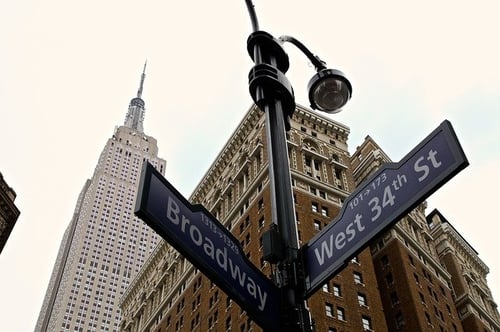
Sample AP US History Questions
Now that you have a sense of the test content, I'll present you with sample questions to give you a better idea of what the AP US History exam actually looks like. All sample questions come from the official US History Course and Exam Description .
Sample Multiple-Choice Question
For multiple choice, you're given one or two pieces of historical evidence followed by a set of questions that ask you to do some analysis . The US History exam is less about knowing specific dates and names and more about being able to draw conclusions and connect themes based on materials provided by the test.
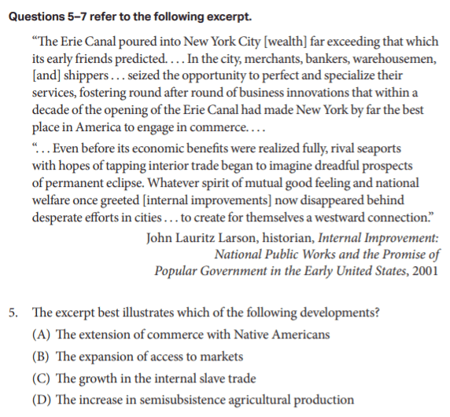
To answer this question, you don't even really need to know much about US history, as long as you pay attention to exactly what's written in the passage, or the secondary source you've been given. The passage here is mainly focused on the increase in commerce in New York as a result of the opening of the Erie Canal.
Answer choice A mentions commerce—that's a good sign—but specifically commerce with Native Americans, who are not mentioned at all in the passage, so this is unlikely to be the right answer.
Answer choice B discusses increased access to markets in the United States, which seems to echo what the passage says about commerce in New York. We'll hold onto this as a potential answer.
Answer choice C is all about the internal slave trade, which isn't mentioned at all in the secondary source, so we can assume this is wrong.
Answer choice D talks about agricultural production, which, again, isn't the focus of the passage—that's commerce. As a result, we can cross this off our list.
This means that the only logical answer to choose is answer choice B .

Sample Short-Answer Question
The short-answer questions are technically considered part of the multiple-choice section because they're less involved than the essay questions. Alt hough they do have multiple parts, you don't have to come up with a thesis—one-sentence answers are OK. These questions are about succinctly connecting themes and reference materials to specific events or trends.
Here's an example:

This short-answer question is an example of question 1, which comes with two secondary sources. As you can see, you'll have to answer three separate parts (A, B, and C), each of which is worth 1 point ; this means you can earn up to 3 points for each short-answer question.
Here's how you could earn full credit for this sample question, per the official scoring guidelines .
(A) Sample Answers
- Peiss argues that pursuits of entertainment in dance halls by working class women created new, legitimate social spaces for women, however Enstand argues that working women's participation in labor politics gave them a new voice and place in the public sphere.
- Peiss links the growth of women in public social life to a commercial culture that provided opportunities for women to enter the public sphere while Enstand argues that women became political actors who demanded a public voice.
(B) Sample Answers
- Like the dance halls, department stores and amusement parks became aspects of the commercial culture that represented new opportunities for women to enjoy public places as legitimate participants.
- The concept of the New Woman became a cultural phenomenon, as the older idea of separate spheres diminished. The idea of the New Woman supported a more public role for women in the early 1900s.
- The growth of cities and urban America gave young women more opportunities to leave rural America and participate in the developments described by Peiss.
- New technologies such as electric lighting made possible new public spaces for personal freedom for women.
(C) Sample Answers
- Women's participation in the suffrage movement, settlement house work, temperance organizing, and the Progressive movement all contributed to modern attitudes about women and increased their roles in the public sphere.
- The ratification of the Nineteenth Amendment to the Constitution gave women the vote and a voice in politics.
- Women were the main participants in the New York shirtwaist strike of 1909. During this strike women made public demands like those described by Enstad.
- Women organized or participated in labor unions such as the International Ladies' Garment Workers' Union (ILGWU) which is an example of their growing voice in the public sphere.
- Working-class women had key public roles in the successful Lawrence (Massachusetts) textile strike of 1912, this demonstrates that women became active political voices through labor movements.

Sample Document-Based Question
With the DBQ , you'll have seven different historical documents to examine . To earn full credit, you must use at least six documents as evidence in your answer. These documents range from transcripts of folk songs, to excerpts from letters and newspapers, to demographic maps.
Here's an example of a DBQ (with one document shown):
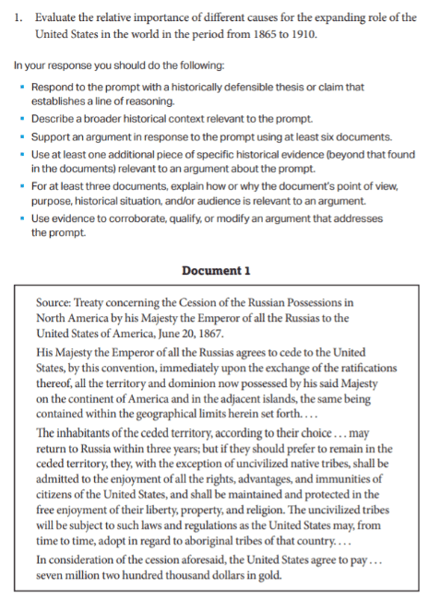
There are several components of a solid response to this question. The DBQ is worth a total of 7 raw points . Here's how you could earn full credit, according to the scoring guidelines .
Sample Long Essay Question
For the Long Essay, you must choose between three prompts . Here's an example of a potential prompt:
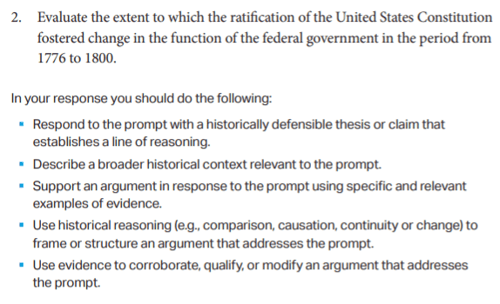
Your essay should include many of the same elements as your answer to the DBQ, but there are no documents to analyze and reference , so you'll have less time to write. The essay is worth 6 raw points .
Here's how you could earn full credit for the sample question above, per the scoring guidelines .
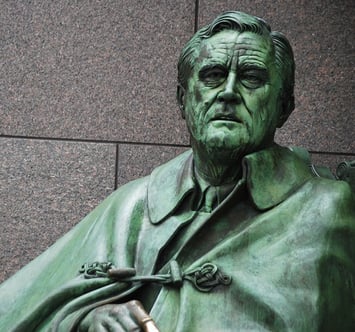
How Is the AP US History Exam Scored?
Here, we'll go over how each section on the AP US History exam is scored, scaled, and combined to give you your final AP score on the 1-5 scale .
On the multiple-choice section, you earn 1 raw point for each question you answer correctly; this means that the max score you can earn here is 55 points. No points are taken off for incorrect answers.
Each of the three short-answer questions is worth 3 points, so there are 9 points possible in this section.
The DBQ is scored out of 7 points and is based on the following criteria, per the scoring guide :
- Thesis/claim: 1 point
- Contextualization: 1 point
- Evidence from the documents: 2 points
- Evidence beyond the documents: 1 point
- Sourcing: 1 point
- Complexity: 1 point
Lastly, the Long Essay is out of 6 raw points and is scored using the following criteria:
- Evidence: 2 points
- Analysis and reasoning: 2 points
On essay questions, points are taken off for errors only if they detract from the quality of the argument being made (in other words, don't go making up historical facts to support your argument). Grammatical and other technical errors aren't a big deal as long as they don't inhibit the grader's ability to understand what your essay is saying.
The total number of raw points you can earn on the AP US History test is 77:
- 55 points for the Multiple Choice questions
- 9 points for the Short Answer questions
- 7 points for the DBQ
- 6 points for the Long Essay
Raw scores can be converted to scaled scores out of 150 . Here's how to do that for each section:
- Multiple Choice: Multiply your raw multiple-choice section score out of 55 by 1.09
- Short Answer: Multiply your raw short-answer score out of 9 by 3.33
- DBQ: Multiply your raw DBQ score out of 7 by 5.36
- Long Essay: Multiply your raw Long Essay score out of 6 by 3.75
Finally, add all the scores together to get your final scaled AP score for US History! Here is a chart to show you approximately how these scaled scores translate to final AP scores:
Source: The College Board
I made my best estimates based on other AP score conversion charts because there was no official scaled-to-AP-score conversion chart online for US History. Your AP teacher or review book might have a more accurate score conversion system you can use for official practice tests.
4 Essential Tips for Acing the AP US History Exam
AP US History is a grueling test that requires intense critical thinking and analytical skills. Here are some helpful tips to remember if you hope to do well on test day.
#1: Don't Confuse Accurate Facts for Correct Answers
Many multiple-choice questions will list answers that are accurate representations of historical events or trends but that don't directly respond to the question being asked . Be wary of these answers on the test so you don't accidentally choose them over more relevant responses.
In the multiple-choice question I gave above as an example, one incorrect choice was "The growth in the internal slave trade." At the time referenced in the question, this was a real trend that occurred, but because it doesn't relate directly to the passage given, it's still the wrong answer .
Don't let these types of answer choices confuse you; adhere to the particulars of the question and the evidence presented to you!
#2: Pay Attention to Details—Read Excerpts Carefully
Most of this AP exam is based on historical reference materials, meaning that you won't be able to answer questions correctly without reading carefully. Even if you know everything there is to know about US History, that knowledge will mostly just serve to contextualize the evidence presented on the test. The specific details found in the writings and images will ultimately reveal the best answer choice.
#3: Plan Before You Write
It's critical to write well-organized, focused essays on the AP US History test. A clear thesis is the first thing on the agenda. You then need to make sure that the rest of your essay ties back into your thesis and provides relevant evidence throughout. If you jump into writing an essay without taking the time to organize your thoughts, you're more likely to ramble or get off-topic from the main focus of the question.
For the DBQ, you should spend 15 of the 60 minutes planning how to organize your thoughts and how to use the different documents as evidence. While you will have less time for the Long Essay, you should still spend five minutes or so writing a brief outline before starting your final draft.
#4: Use Outside Evidence Wisely
It's a smart idea to incorporate additional background knowledge into your DBQ and Long Essay responses on the AP US History test. It shows that you've mastered the material and can connect themes to what you learned in class and not just what was presented to you in the question.
That said, don't include outside knowledge unless it really bolsters your argument . If you're just sticking it in there to prove how much you know, your essay will lack focus and you might lose points.
This is why it's so important to plan ahead. In the planning stage, you can think of examples that tie into your thesis and strategically place them throughout your essay in ways that contribute to your point.

Conclusion: Getting a Great Score on the AP US History Exam
The AP US History exam is one of the longer AP tests, and it has four different types of questions: Multiple Choice, Short Answer, Document-Based Question (DBQ), and Long Essay.
The main thread running through this test is an emphasis on analyzing historical evidence and applying outside knowledge in context. In your studying, you will need to learn to connect the themes of the course to events spanning 500 years of US history.
Here are some study tips to heed as you prep for the AP US History test:
- Don't mistake accurate facts for correct answers
- Always read excerpts carefully
- Plan before writing your essays
- Use outside evidence strategically
Make sure that you practice all the different types of exam questions with official materials before you sit down to take the real test . If you get used to thinking about history in an analytical, evidence-based context, you should have no problem earning a high US History score!
What's Next?
Looking for more practice materials? Check out our article on the best online quizzes you can take to prepare for the AP US History test !
Review books can be extremely helpful tools in preparing for AP exams. If you can't decide which one to get, take a look at this list of the best review books for the AP US History test .
Did you lose some of your notes? Feel free to use these links to AP US History notes for every section of the course .

Samantha is a blog content writer for PrepScholar. Her goal is to help students adopt a less stressful view of standardized testing and other academic challenges through her articles. Samantha is also passionate about art and graduated with honors from Dartmouth College as a Studio Art major in 2014. In high school, she earned a 2400 on the SAT, 5's on all seven of her AP tests, and was named a National Merit Scholar.
Student and Parent Forum
Our new student and parent forum, at ExpertHub.PrepScholar.com , allow you to interact with your peers and the PrepScholar staff. See how other students and parents are navigating high school, college, and the college admissions process. Ask questions; get answers.

Ask a Question Below
Have any questions about this article or other topics? Ask below and we'll reply!
Improve With Our Famous Guides
- For All Students
The 5 Strategies You Must Be Using to Improve 160+ SAT Points
How to Get a Perfect 1600, by a Perfect Scorer
Series: How to Get 800 on Each SAT Section:
Score 800 on SAT Math
Score 800 on SAT Reading
Score 800 on SAT Writing
Series: How to Get to 600 on Each SAT Section:
Score 600 on SAT Math
Score 600 on SAT Reading
Score 600 on SAT Writing
Free Complete Official SAT Practice Tests
What SAT Target Score Should You Be Aiming For?
15 Strategies to Improve Your SAT Essay
The 5 Strategies You Must Be Using to Improve 4+ ACT Points
How to Get a Perfect 36 ACT, by a Perfect Scorer
Series: How to Get 36 on Each ACT Section:
36 on ACT English
36 on ACT Math
36 on ACT Reading
36 on ACT Science
Series: How to Get to 24 on Each ACT Section:
24 on ACT English
24 on ACT Math
24 on ACT Reading
24 on ACT Science
What ACT target score should you be aiming for?
ACT Vocabulary You Must Know
ACT Writing: 15 Tips to Raise Your Essay Score
How to Get Into Harvard and the Ivy League
How to Get a Perfect 4.0 GPA
How to Write an Amazing College Essay
What Exactly Are Colleges Looking For?
Is the ACT easier than the SAT? A Comprehensive Guide
Should you retake your SAT or ACT?
When should you take the SAT or ACT?
Stay Informed
Get the latest articles and test prep tips!
Looking for Graduate School Test Prep?
Check out our top-rated graduate blogs here:
GRE Online Prep Blog
GMAT Online Prep Blog
TOEFL Online Prep Blog
Holly R. "I am absolutely overjoyed and cannot thank you enough for helping me!”
Finished Papers
Who can help me write my essay?
At the end of the school year, students have no energy left to complete difficult homework assignments. In addition, inspiration is also lacking, so there are only a few options:
- do not write a scientific work;
- write it badly;
- delegate these responsibilities to other people.
Most often, people choose the latter option, which is why companies have appeared on the Internet offering to take full responsibility.
When you visit the site, the managers clarify all the details in order to correctly design the article. They select a person who is well versed in the topic of the report and give him your task.
You will not be able to personally communicate with the writer who will do your work. This is done to ensure that all your personal data is confidential. The client, of course, can make edits, follow the writing of each section and take part in the correction, but it is impossible to communicate with the team.
Do not worry that you will not meet personally with the site team, because throughout the entire cooperation our managers will keep in touch with each client.
Customer Reviews
How to Write an Essay For Me
Paper writing service price estimation.

"Essay - The Challenges of Black Students..."
Our writers always follow the customers' requirements very carefully

IMAGES
VIDEO
COMMENTS
Download free-response questions from past exams along with scoring guidelines, sample responses from exam takers, and scoring distributions. If you are using assistive technology and need help accessing these PDFs in another format, contact Services for Students with Disabilities at 212-713-8333 or by email at [email protected]. The ...
Study with Quizlet and memorize flashcards containing terms like The point of view of the first two paragraphs of the excerpt can best be used to support which of the following historical arguments? (William Jennings Bryan Speech), The excerpt could best be used by a historian studying which of the following historical developments? (William Jennings Bryan Speech), Which of the following is a ...
APUSH Period 7 Review (1898-1945) 6 min read • december 21, 2021. In AP® US History, period 7 spans from 1898 to 1945 CE. The following guide will be updated periodically with hyperlinks to excellent resources. As you are reviewing for this era, focus on the key concepts and use the essential questions to guide you.
AP U.S. HISTORY EXAM SAMPLE QUESTIONS . Long Essay Question: Period 7 Suggested writing time: 40 minutes . Directions: In your response you should do the following: Å . Respond to the prompt with a historically defensible thesis or claim that establishes a line of reasoning. Å . Describe a broader historical context relevant to the prompt. Å
Question 1. Analyze major changes and continuities in the social and economic experiences of African Americans who migrated from the rural South to urban areas in the North in the period 1910-1930. * This sample document-based question is the same as that given in the U.S. History Course and Exam Description.
AP US History Practice Test: Period 7 (1890-1945) Our free APUSH unit 7 practice test covers the years 1890-1945. This period spans several transformative decades, from the Progressive Era's reforms to the global upheavals of two world wars. The U.S.'s evolving role in global affairs, especially its involvement in World War I and II and ...
Period 7 Notes (1890-1945) Period 8 Notes (1945-1980) Period 9 Notes (1980-Present) Practice: Multiple Choice Questions; Short-Answer Questions; AP US History Reading Strategies; Approaching Document-Based Questions. Practice: Document-Based Question; Approaching the Long Essay Question. Practice: Long Essay Question; PERSIA Charts & Chain Outlines
Period 7 Notes (1890-1945) Period 8 Notes (1945-1980) Period 9 Notes (1980-Present) Practice: Multiple Choice Questions; Short-Answer Questions; AP US History Reading Strategies; Approaching Document-Based Questions. Practice: Document-Based Question; Approaching the Long Essay Question. Practice: Long Essay Question; PERSIA Charts & Chain Outlines
Period 7: 1890-1945. An increasingly pluralistic United States faced profound domestic and global challenges, debated the proper degree of government activism, and sought to define its international role. Topics may include. Debates over Imperialism. The Progressive Movement. World War I. Innovations in Communications and Technology in the 1920s.
By the early 20th century, the US had become a global power, actively engaging in foreign policy and imperialism. Explore how this position was bouyed by industrial and technical progress - and tested by two world wars. You'll also connect economic and social trends of the times to the progressive ideas and policies that arose during this period.
AP® U.S. History 2021 Scoring Guidelines. Row D Analysis and Reasoning (0-2 points) 0 points. Does not meet the criteria for one point. 1 point. Uses historical reasoning (e.g., comparison, causation, continuity and change) to frame or structure an argument that addresses the prompt. 2 points.
Long Essay Question. Evaluate the extent to which women's lives changed during the Progressive Era (1890-1920) of United States History. To earn this point, the thesis must make a claim that responds to the prompt rather than restating or rephrasing the prompt.
7 minutes. See All test questions. Questions 1-2 refer to the following information. 1. The point of view of the cartoon above is that. A. Christian missionaries were overly concerned with gaining converts in other lands while they ignored poverty at home. B. open immigration policies were undermining the economic stability of the United States.
Breakdown of Essay: The AP U.S. History exam gives students a choice between two long-essay questions. You chose ONE! A thesis statement is required. You will have 35 minutes to answer the one question you select. Makes up 15 % of final exam score. Graded on a 0-6 point scale.
APUSH Period 6 Questions. 145 terms. Karan_Joseph. APUSH Period 4 Questions. 140 terms. Karan_Joseph. APUSH Period 5.2 Questions. 132 terms. Karan_Joseph. APUSH Period 6.1 Questions. 148 terms. Karan_Joseph. Other sets by this creator. ... What is your overall impression of this essay? Verified answer. literature.
Unit 6: Period 6: 1865-1898. You'll examine the nation's economic and demographic shifts in this period and their links to cultural and political changes. Topics may include: The settlement of the West. The "New South". The rise of industrial capitalism. Immigration and migration. Reform movements.
Breakdown of Essay: The AP U.S. My exam gives students a choice amongst two long-essay questions. You chose ONE! A thesis statement a required. You will have 35 minutes to answers the one question you select. Makes up 15 % of closing exam score. Staged on a 0-6 subject scale.
Short Answer: Multiply your raw short-answer score out of 9 by 3.33. DBQ: Multiply your raw DBQ score out of 7 by 5.36. Long Essay: Multiply your raw Long Essay score out of 6 by 3.75. Finally, add all the scores together to get your final scaled AP score for US History!
Section II of the APUSH exam consists of two types of free-response questions.Part A consists of one document-based question (DBQ), and Part B consists of one long essay question (LEQ).For the DBQ, students have 60 minutes to answer, including 15 minutes for reading, whereas for the LEQ, students get just 40 minutes to complete it.. You should take at least one AP U.S. History practice test ...
Apush Period 7 Long Essay Questions - REVIEWS HIRE. 4.7/5. 4.9/5. Nursing Business and Economics Management Healthcare +84. Nursing Management Psychology Healthcare +85. Level: Master's, University, College, PHD, High School, Undergraduate. REVIEWS HIRE. Apush Period 7 Long Essay Questions: ID 10820. 377
Download free-response questions from past exams along with scoring guidelines, sample responses from exam takers, and scoring distributions. If you are using assistive technology and need help accessing these PDFs in another format, contact Services for Students with Disabilities at 212-713-8333 or by email at [email protected]. The ...
Apush Period 7 Long Essay Questions. Our best editors will run additional screenings to check the quality of your paper. Receive a Paper. On-schedule delivery. Compliance with the provided brief. Chat with your helper. Ongoing 24/7 support. Real-time alerts.